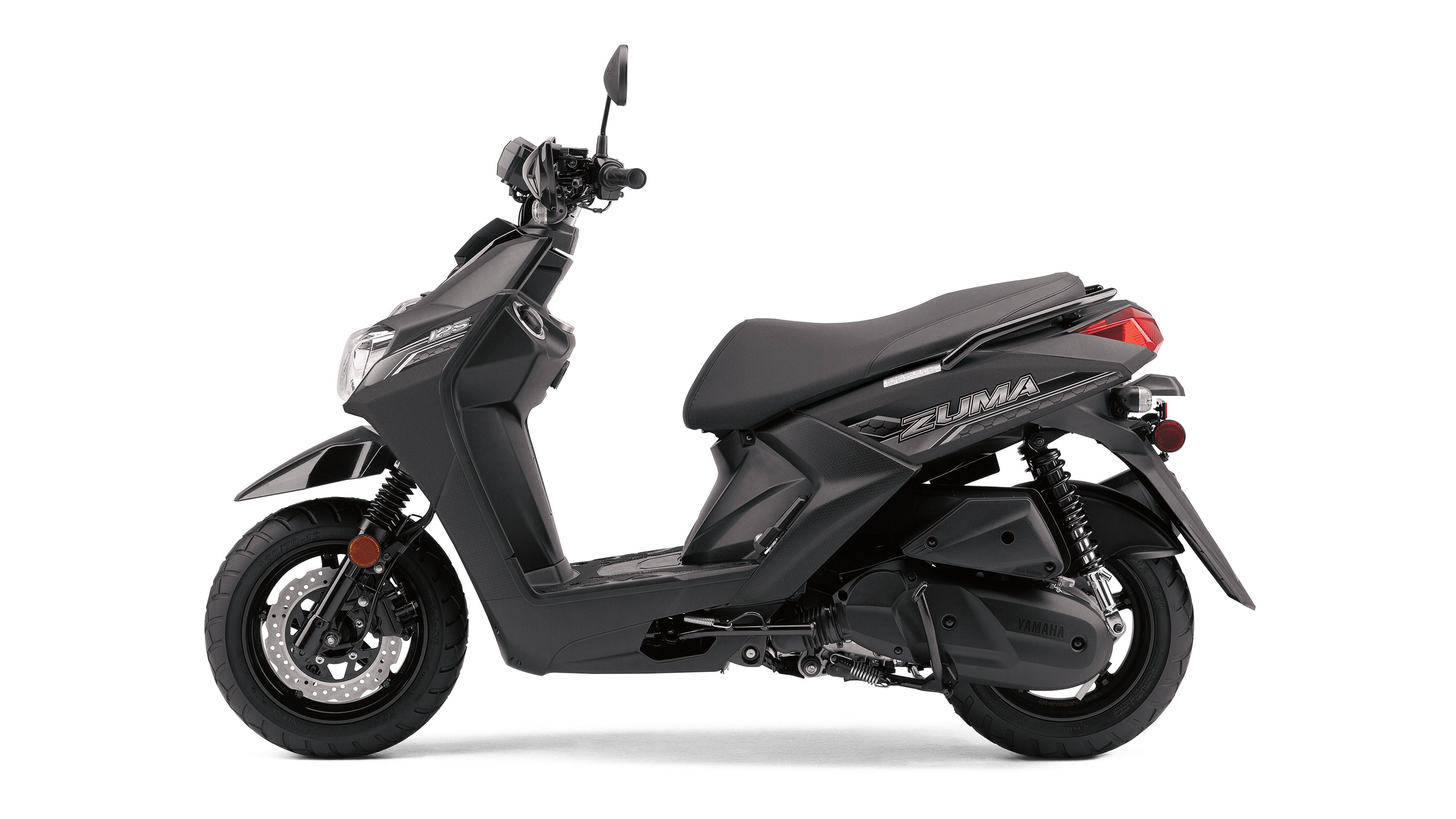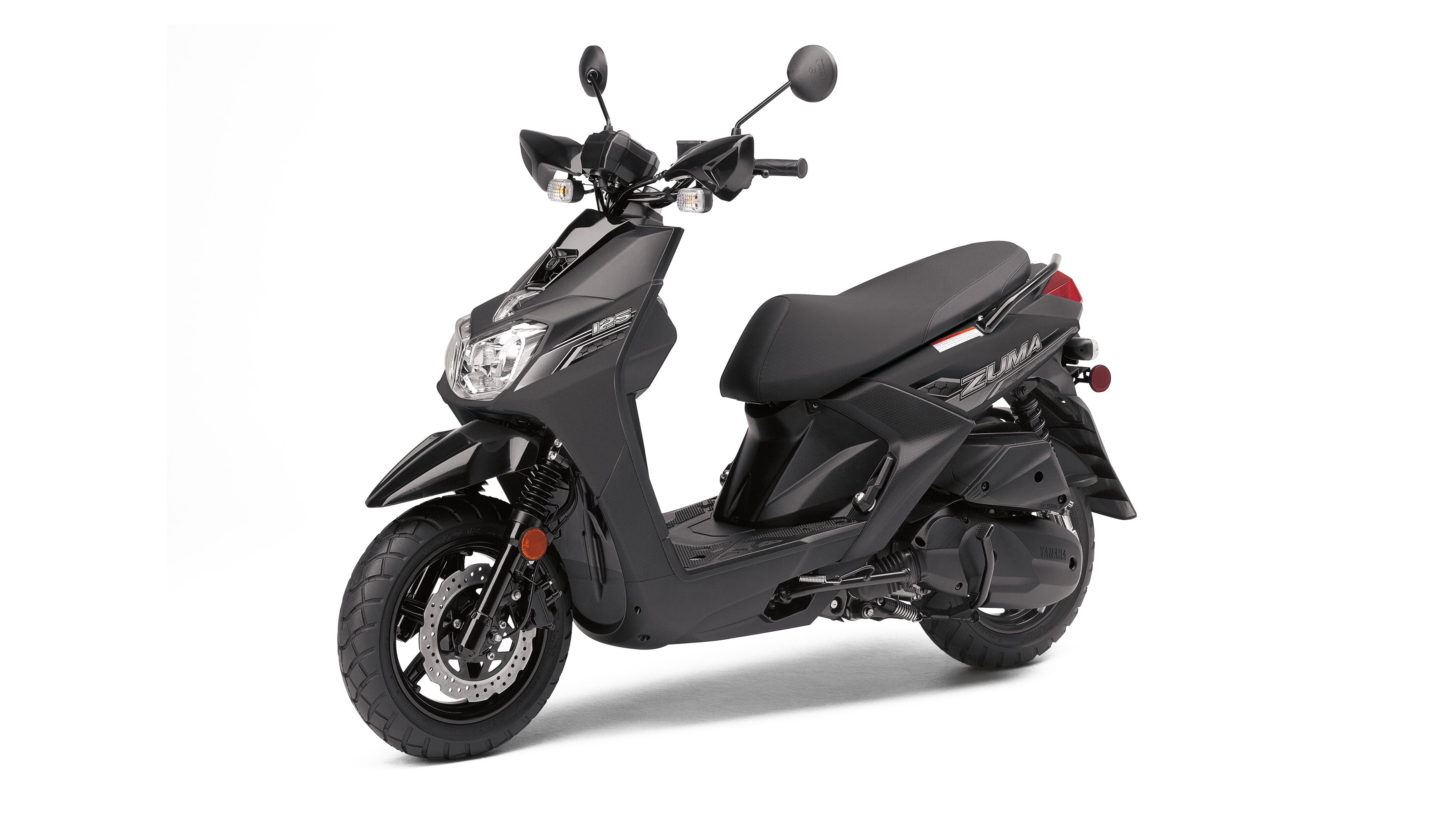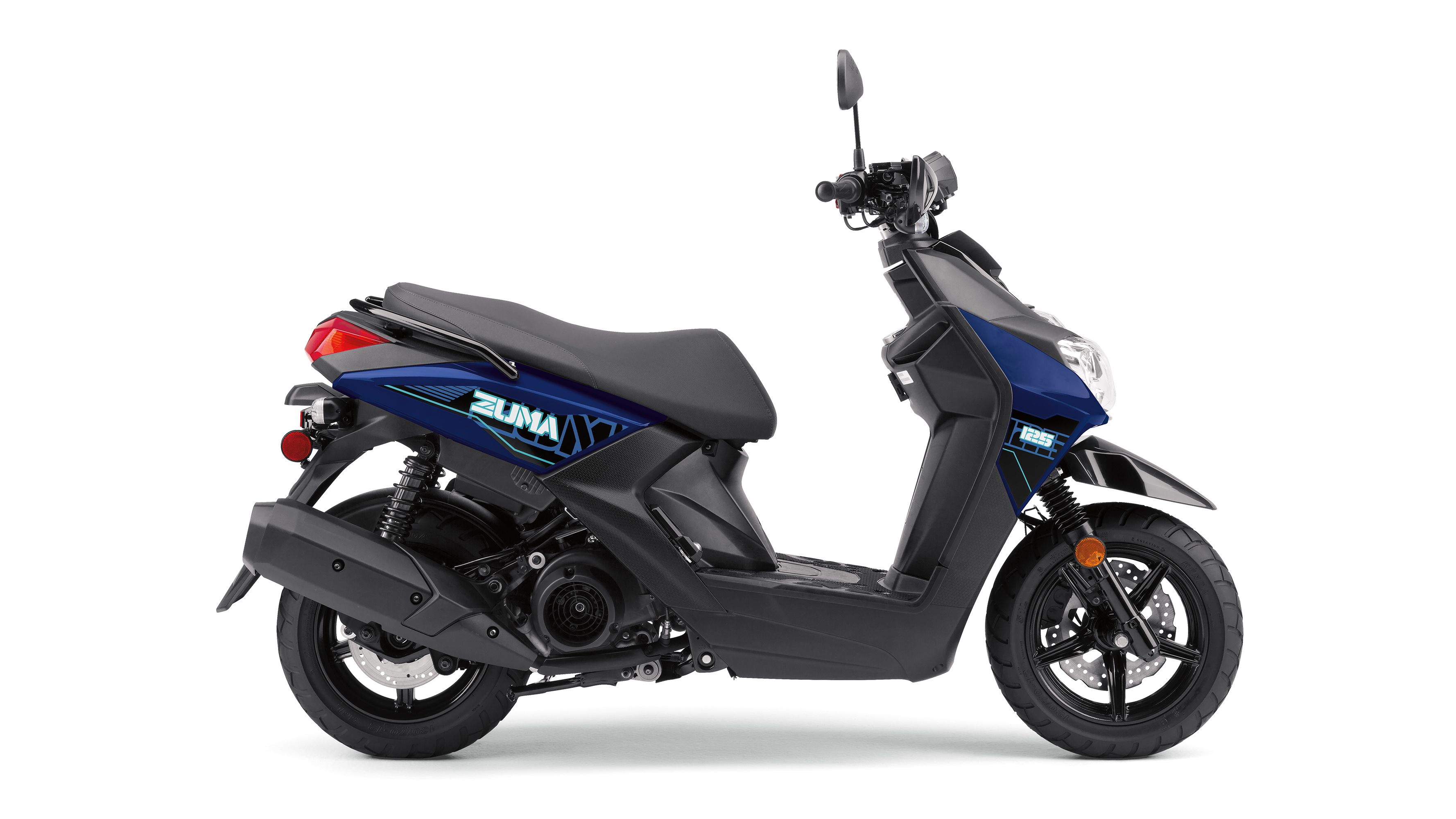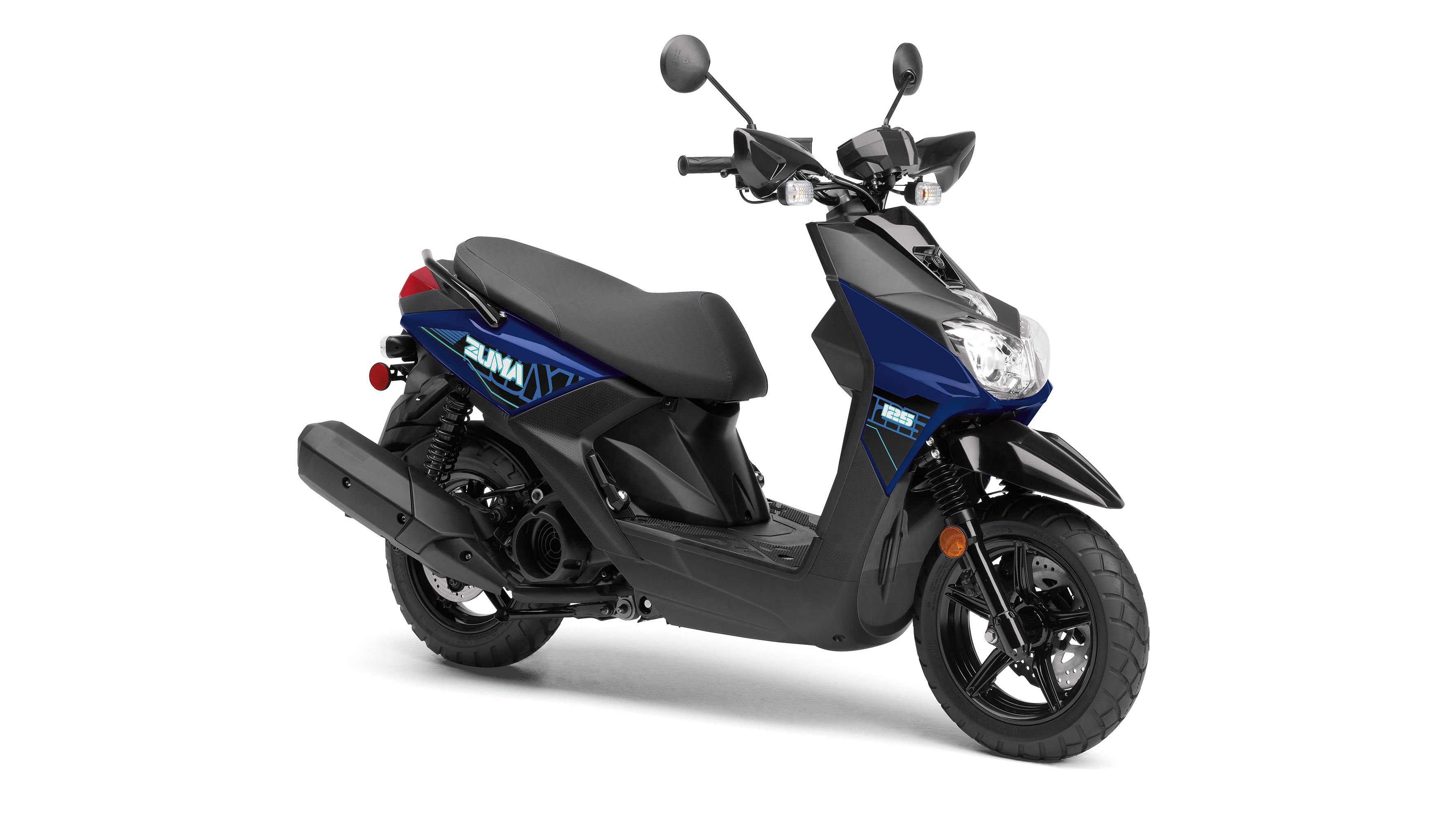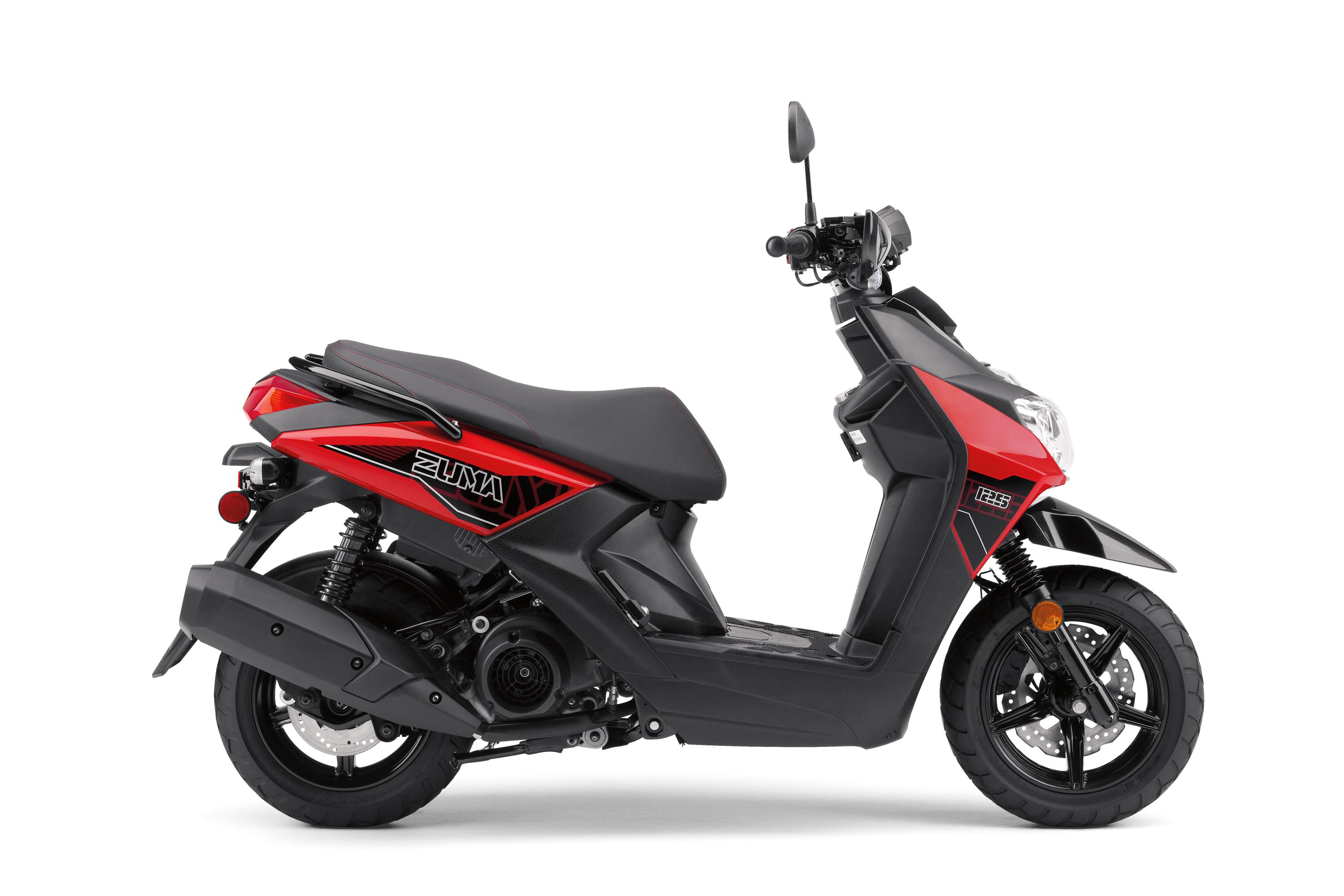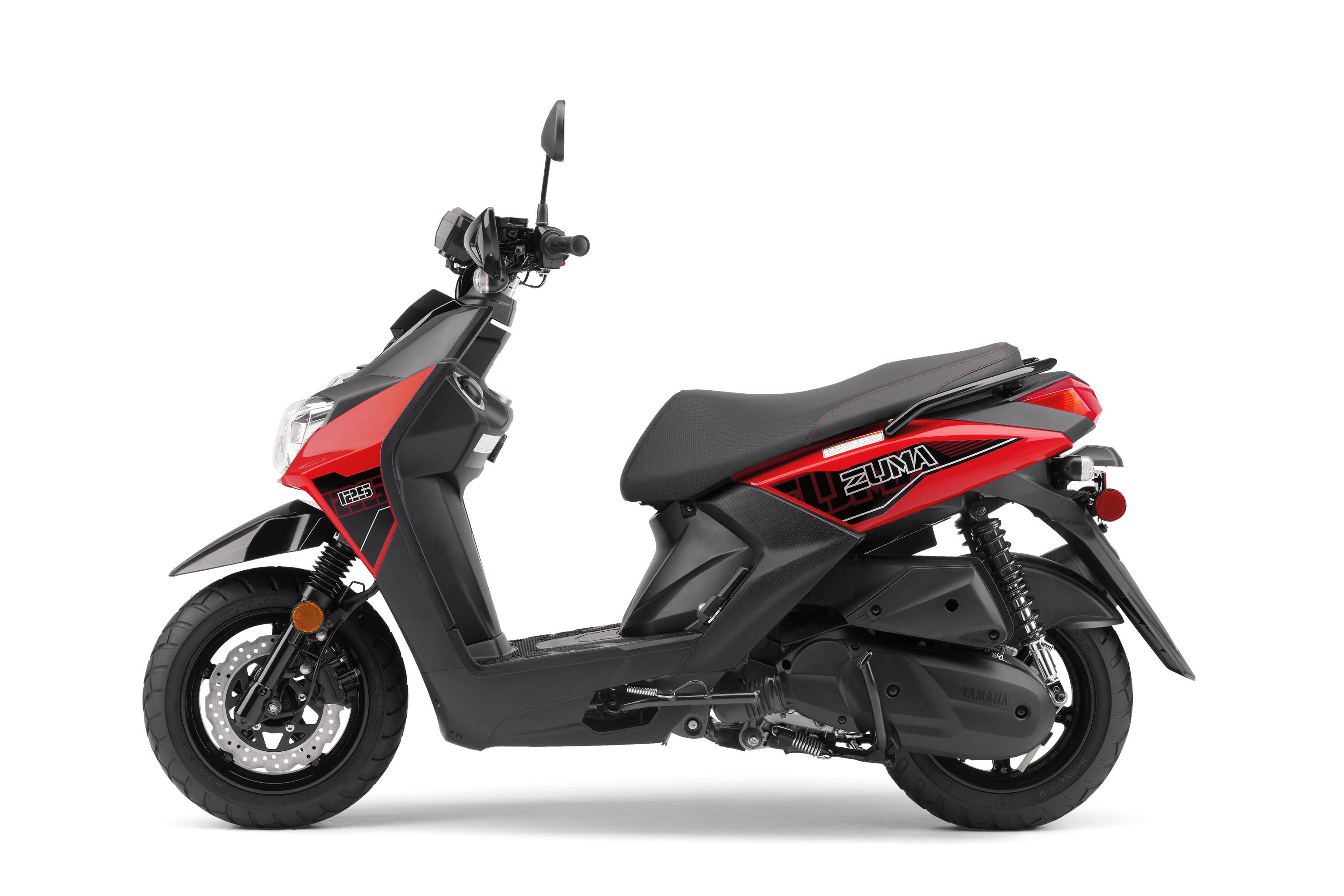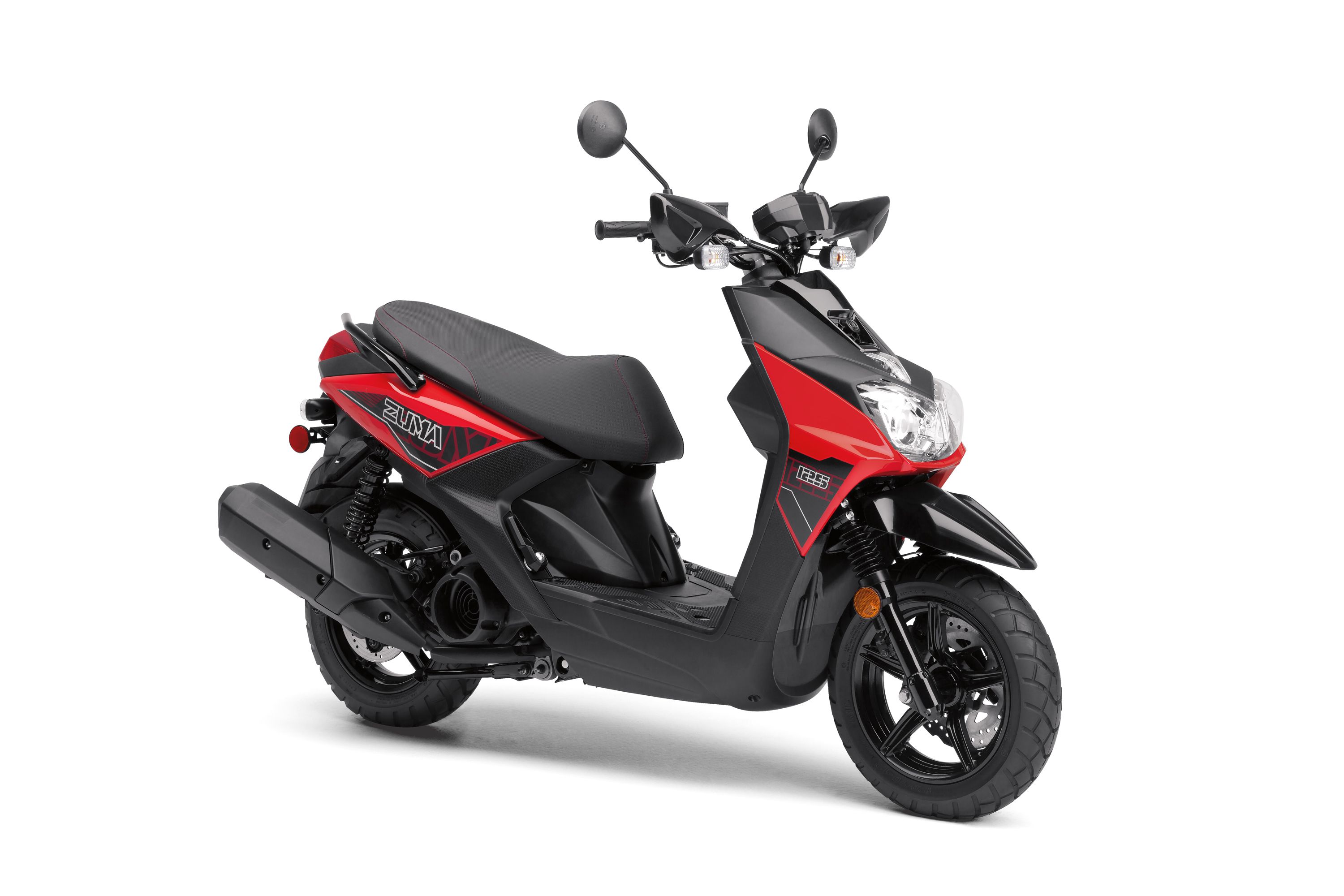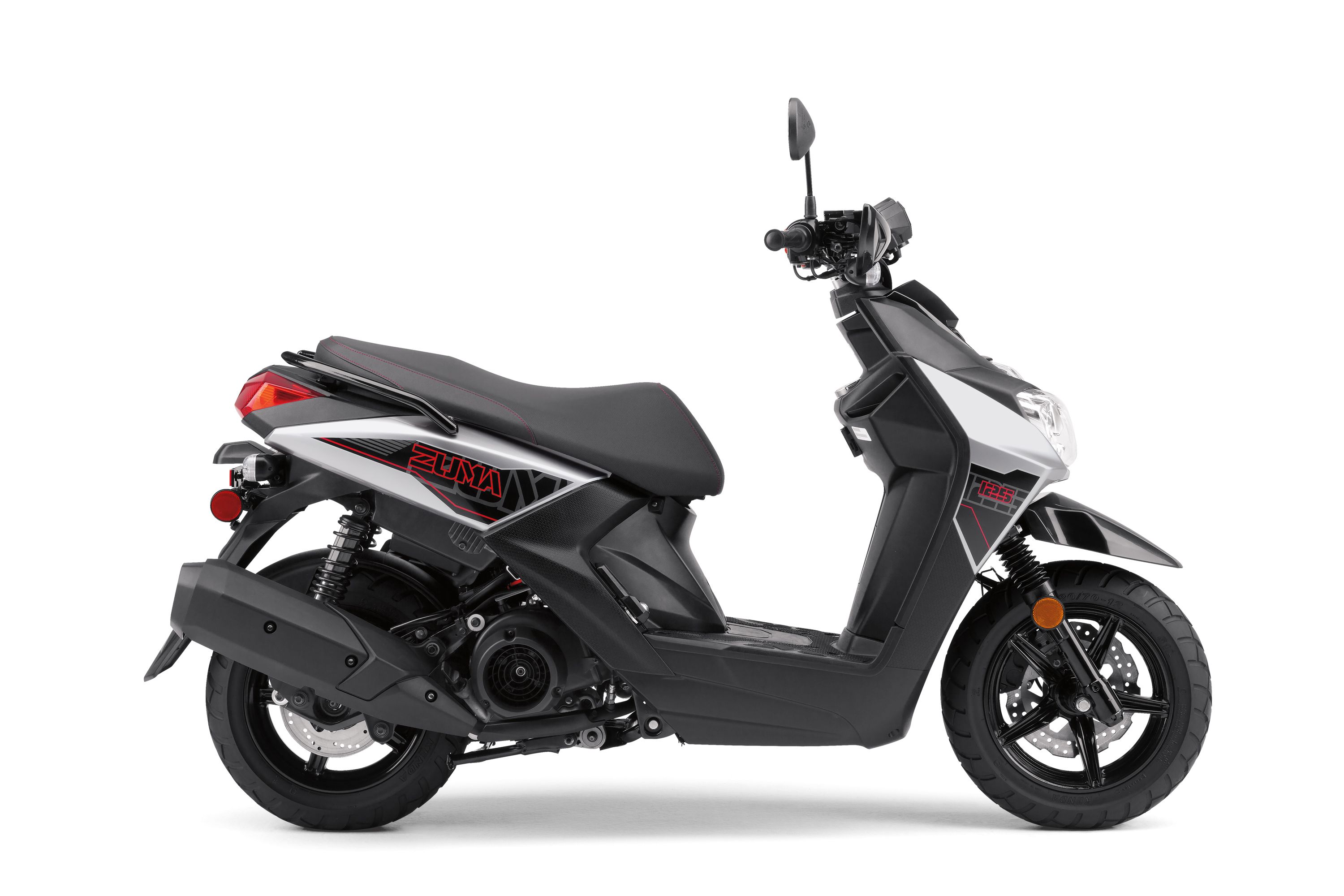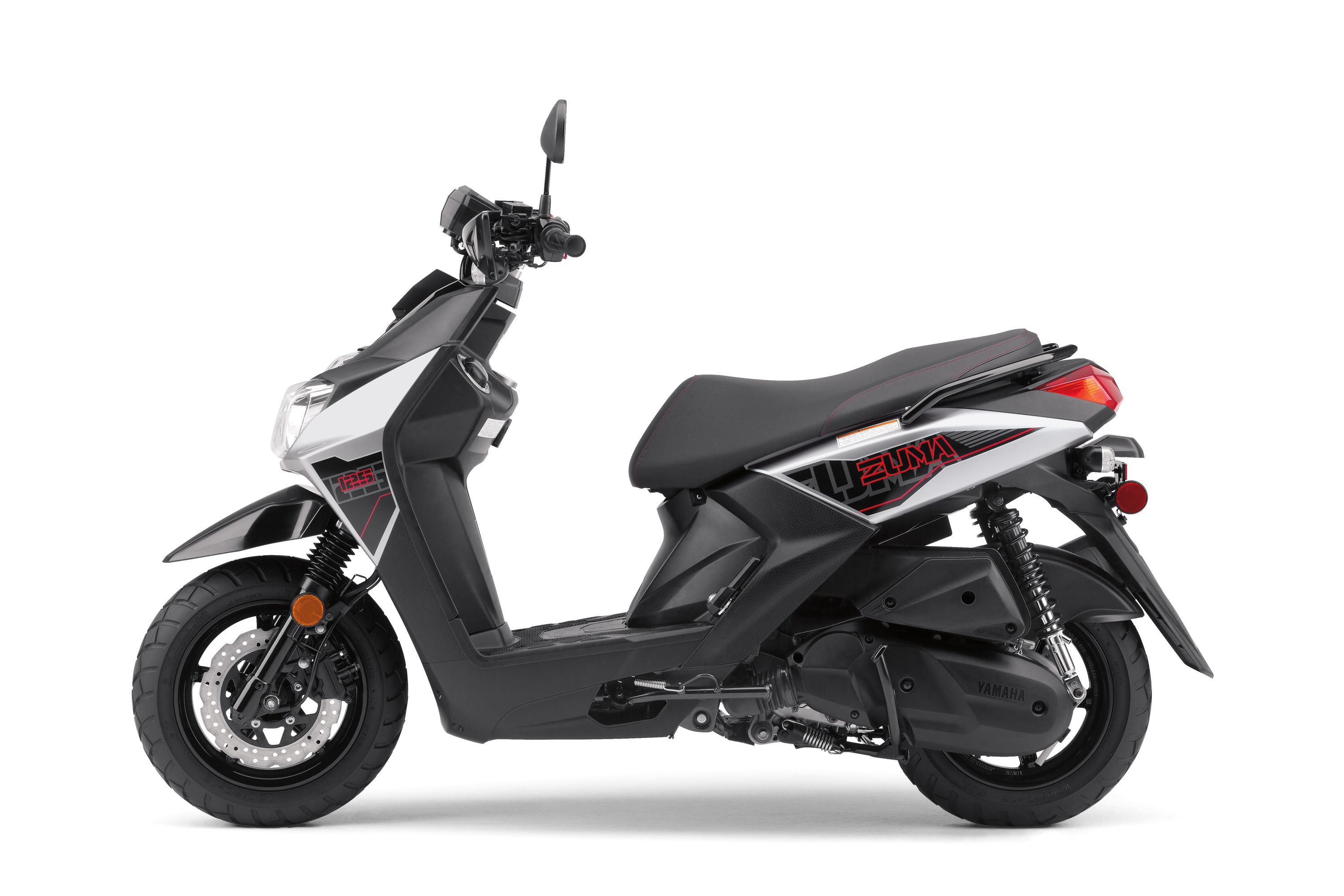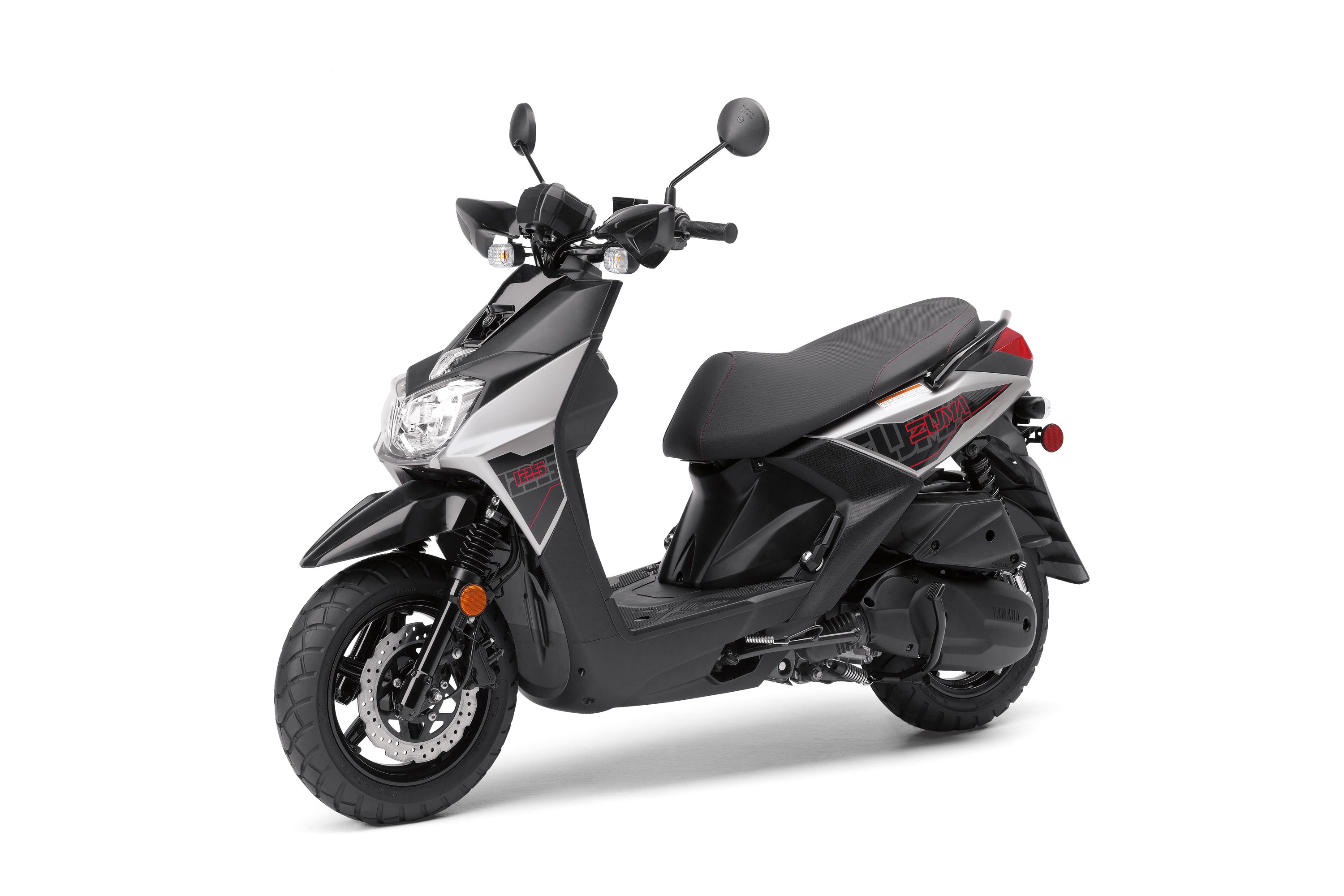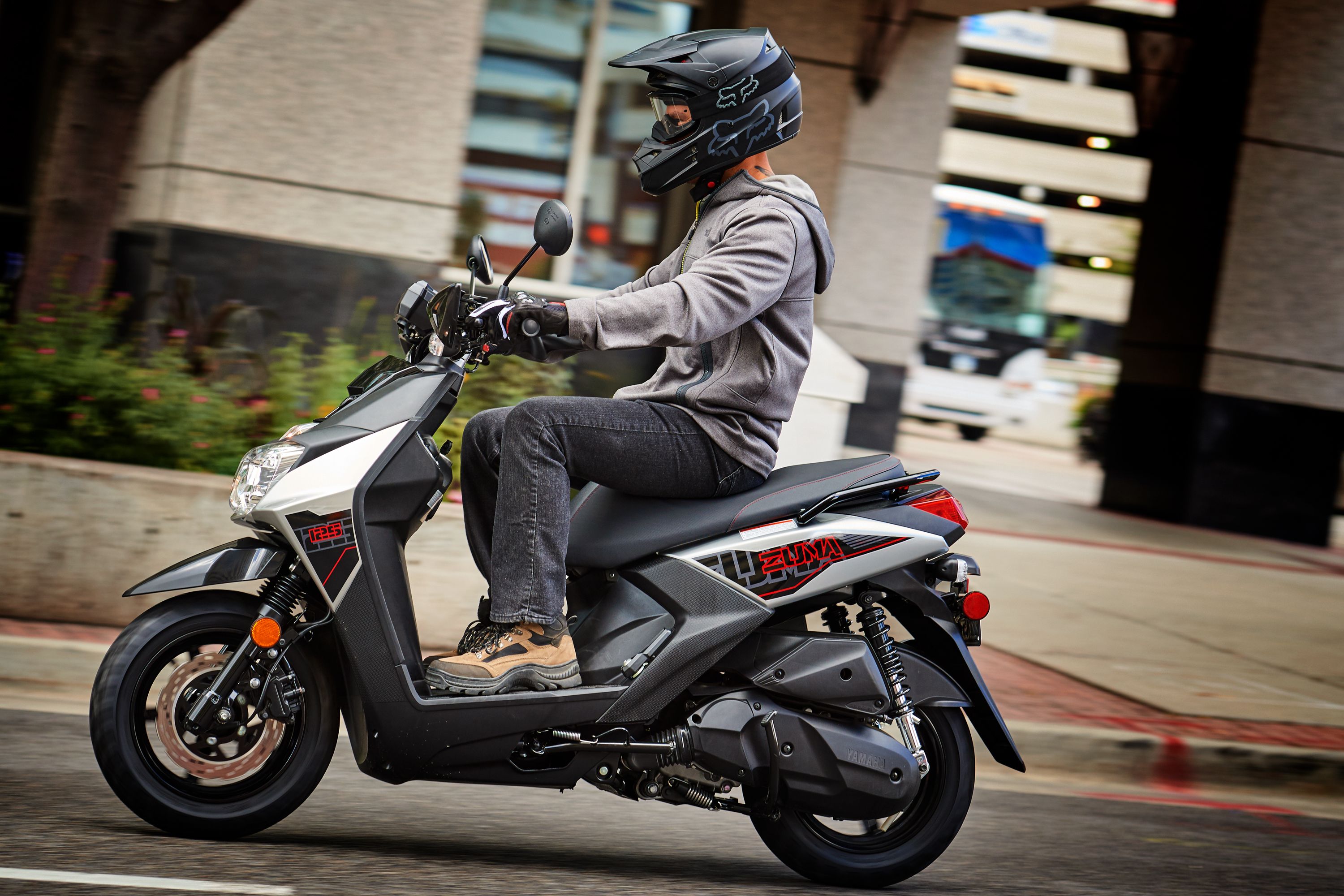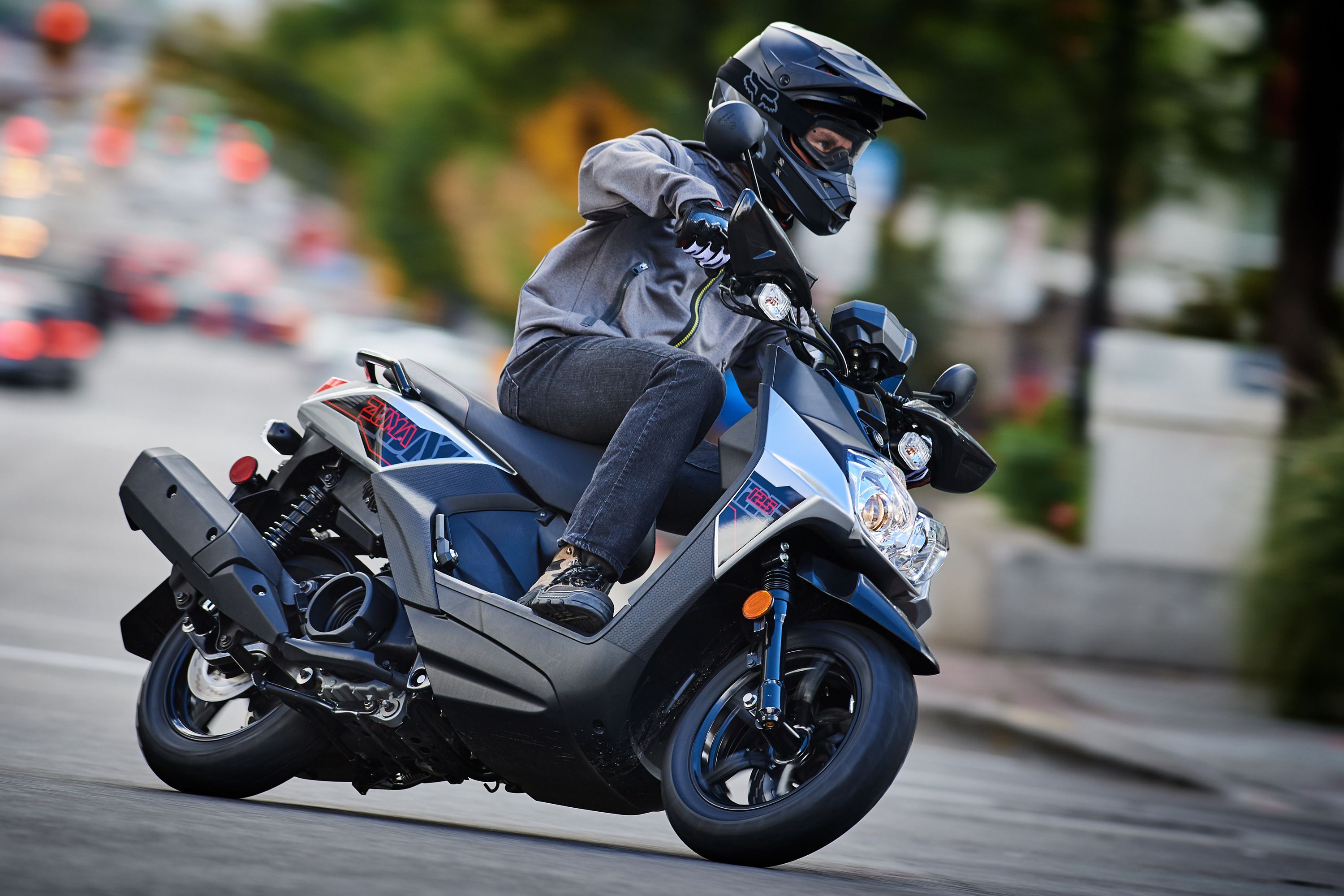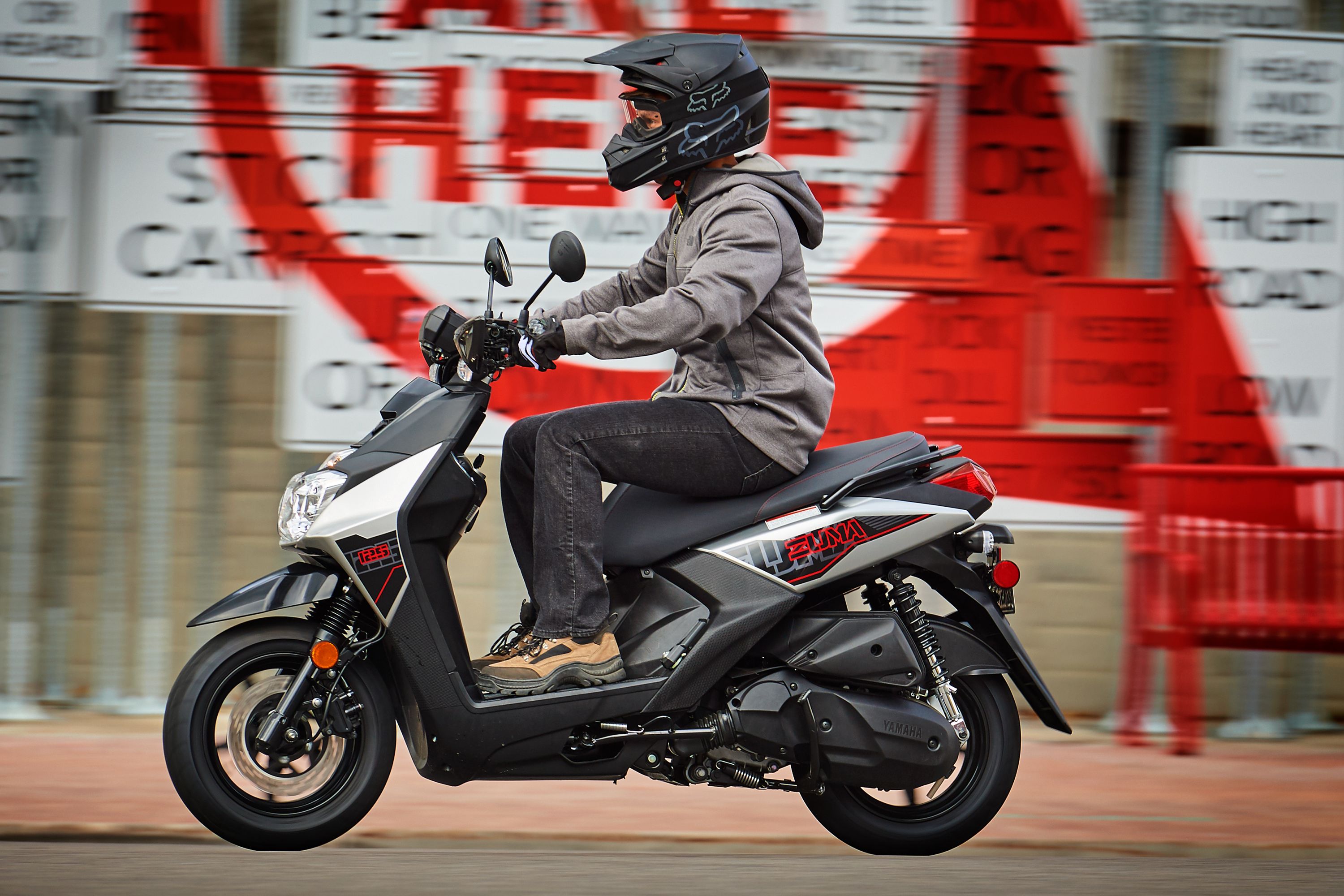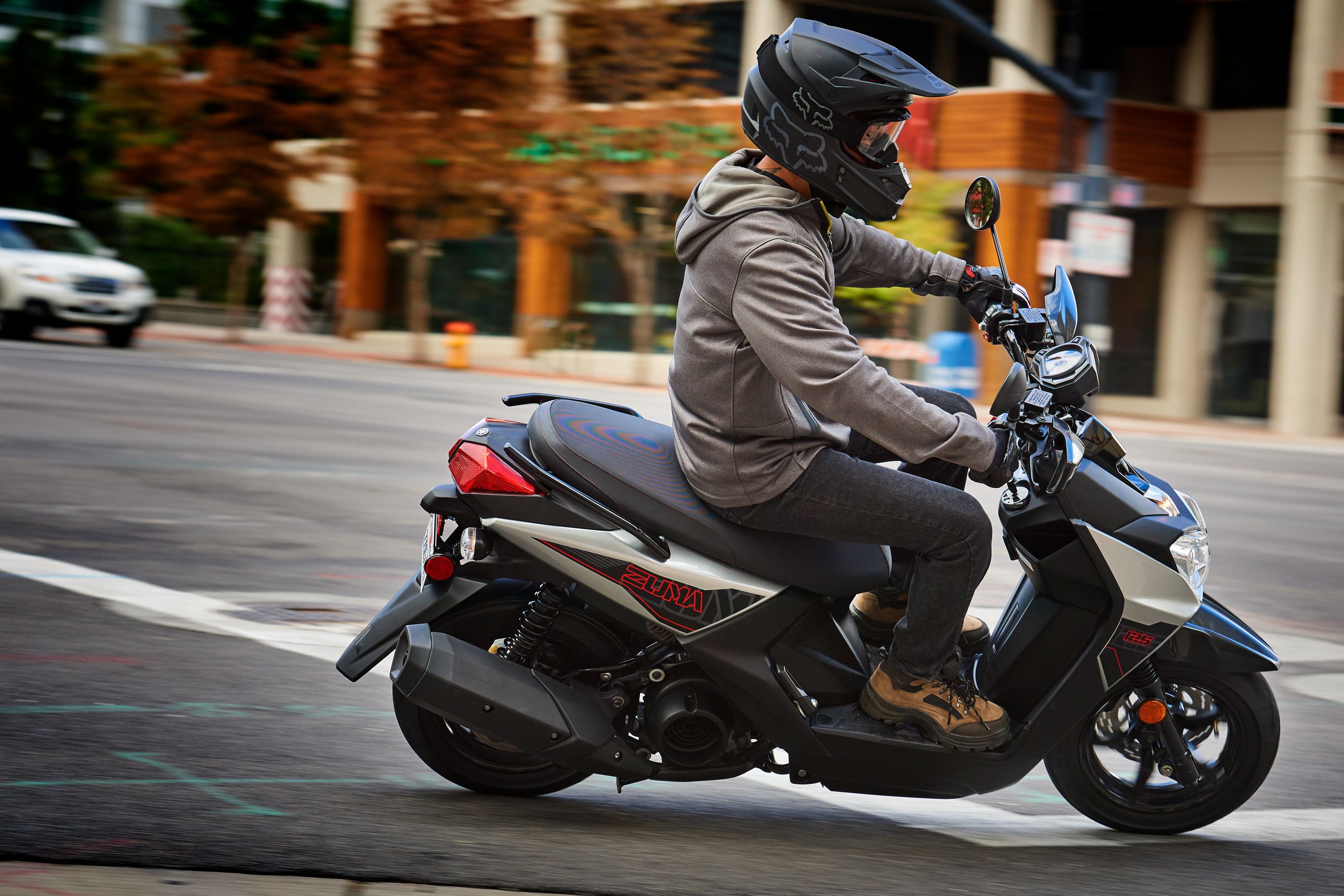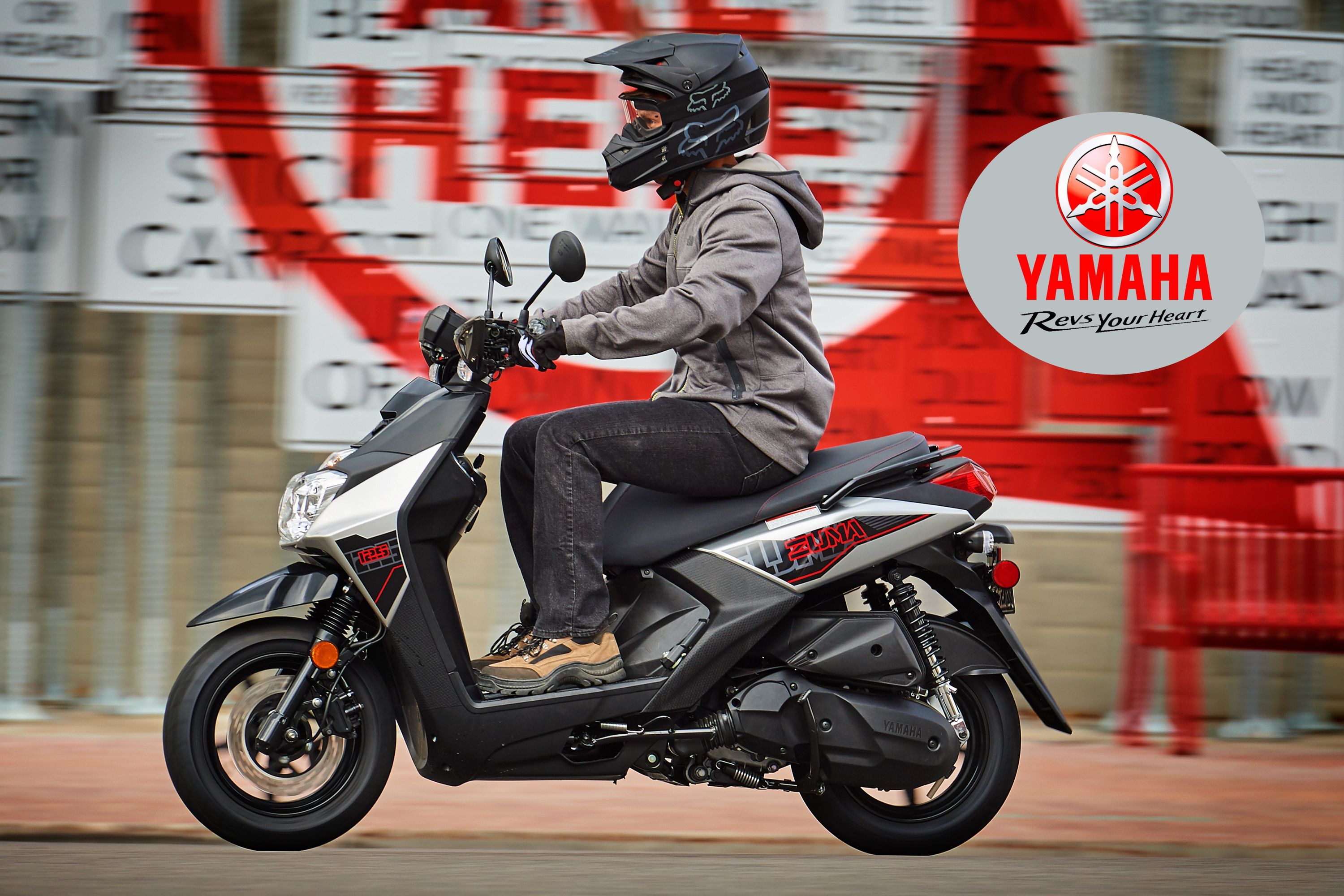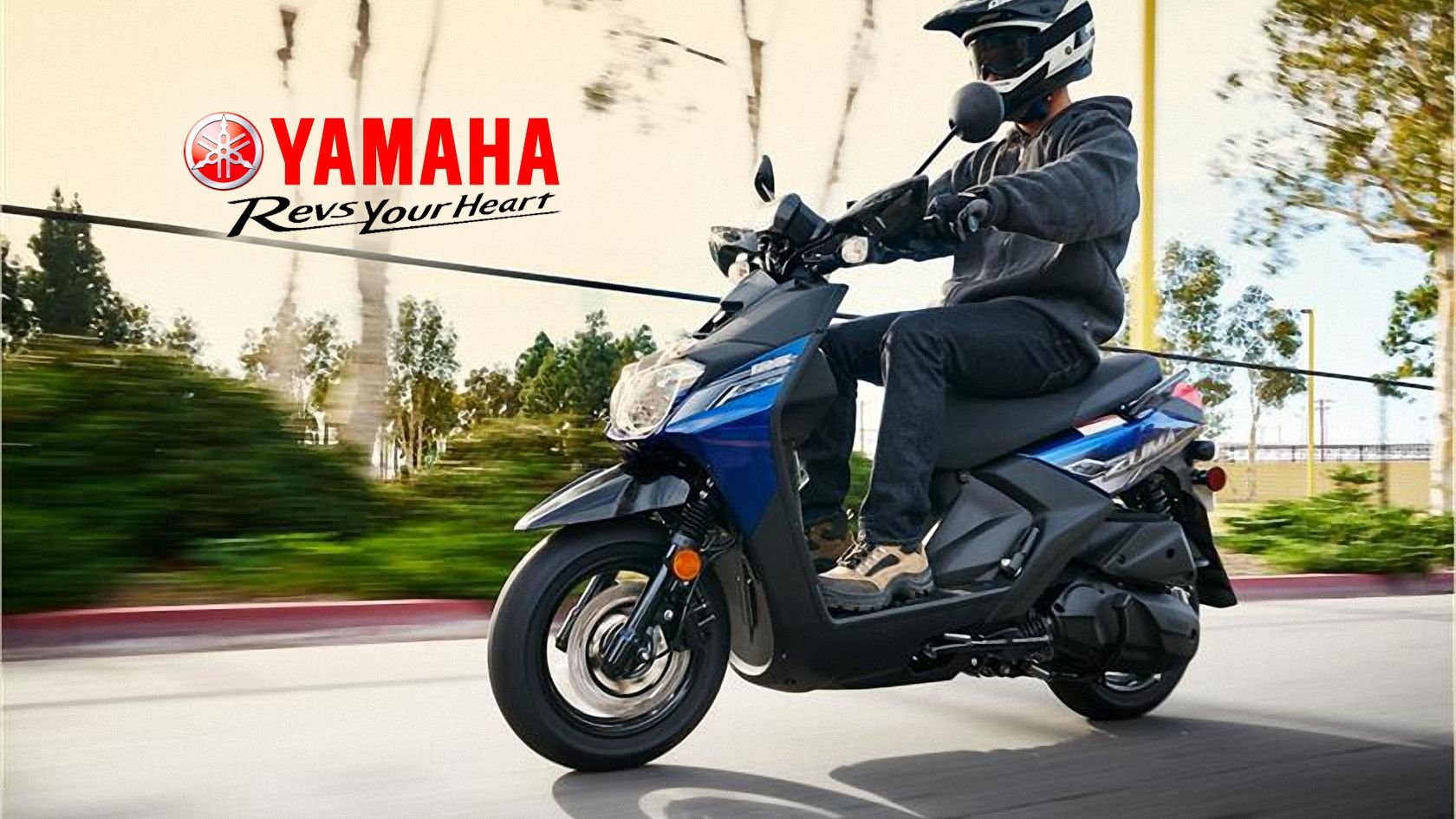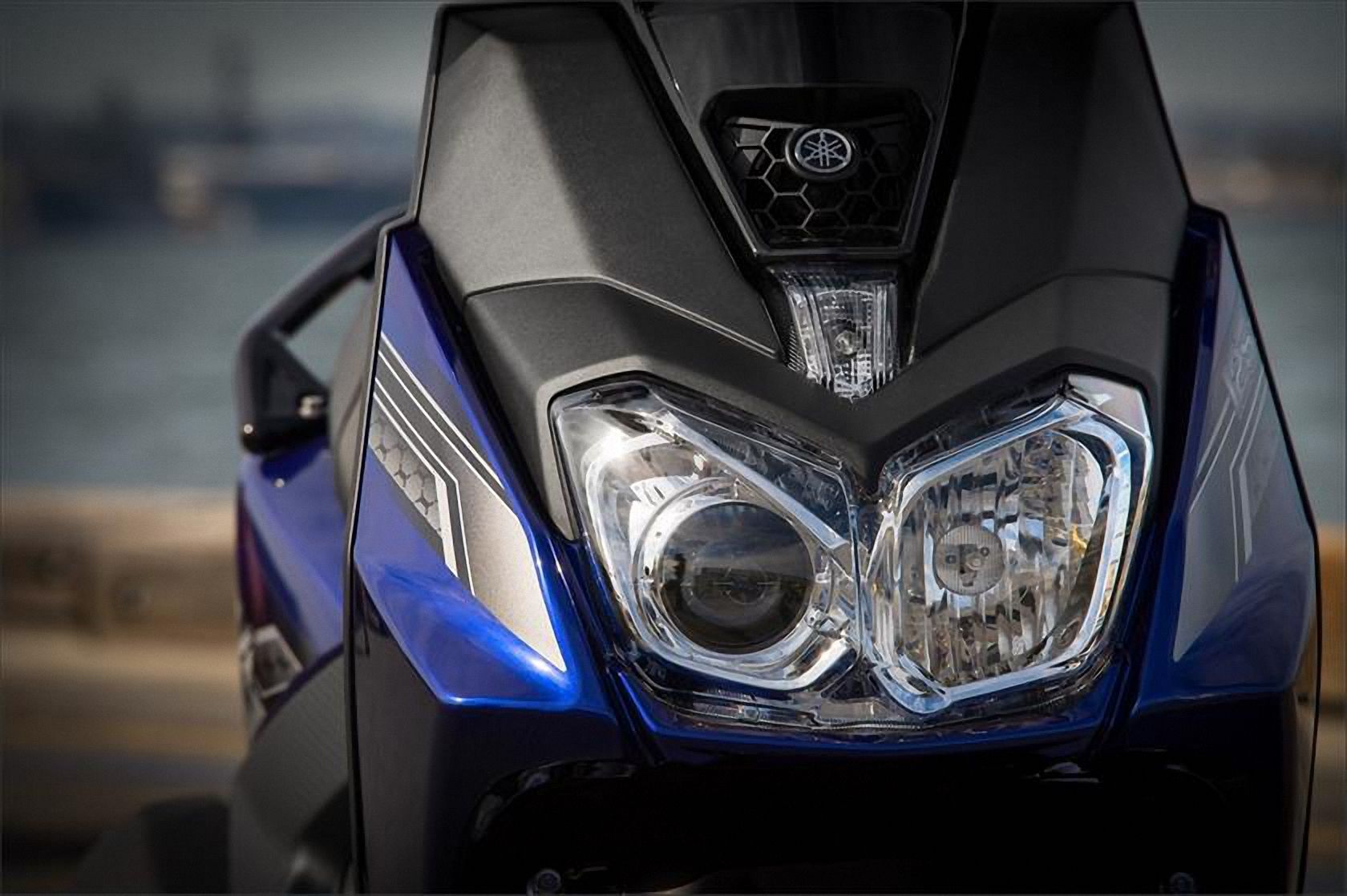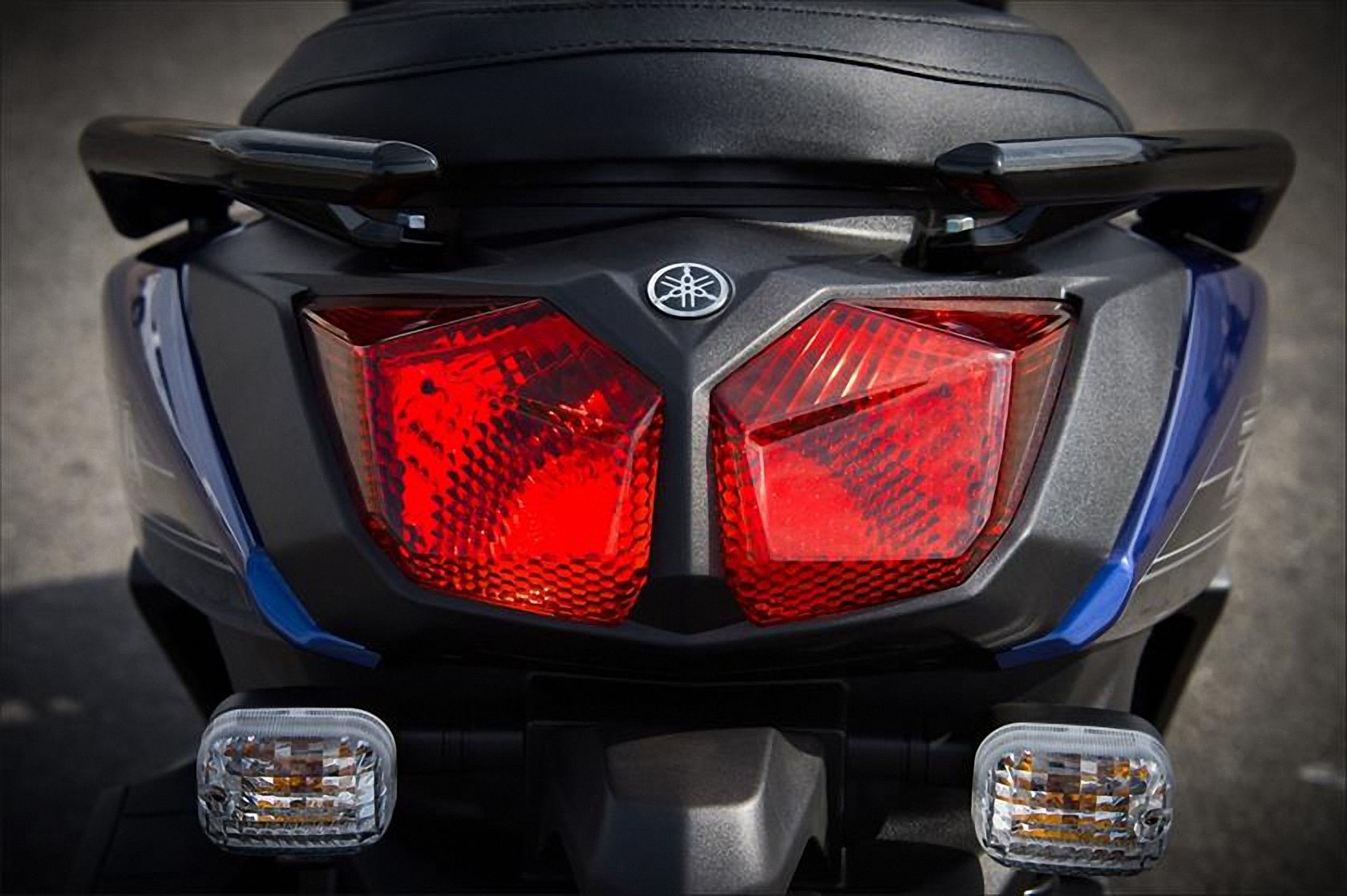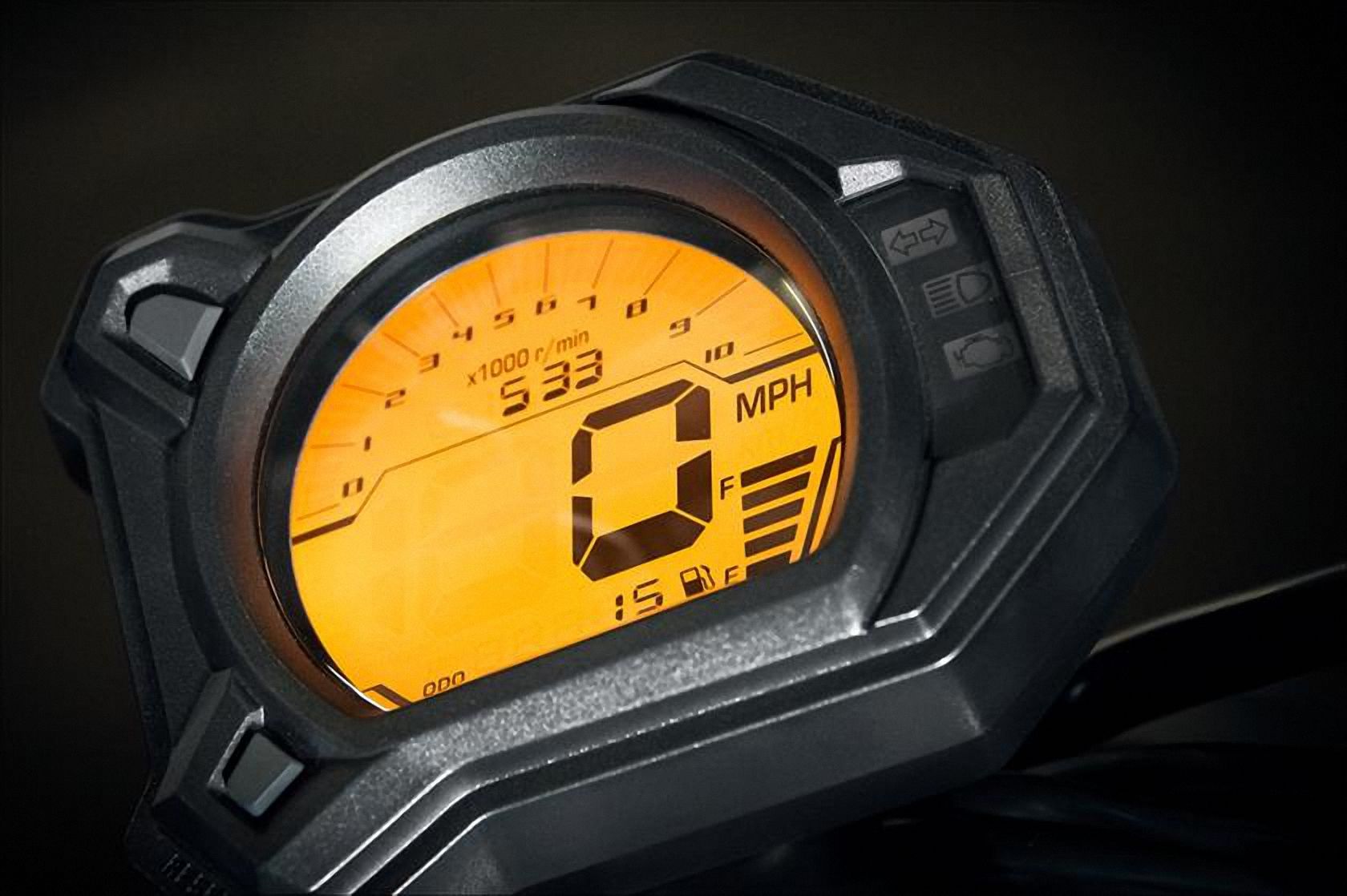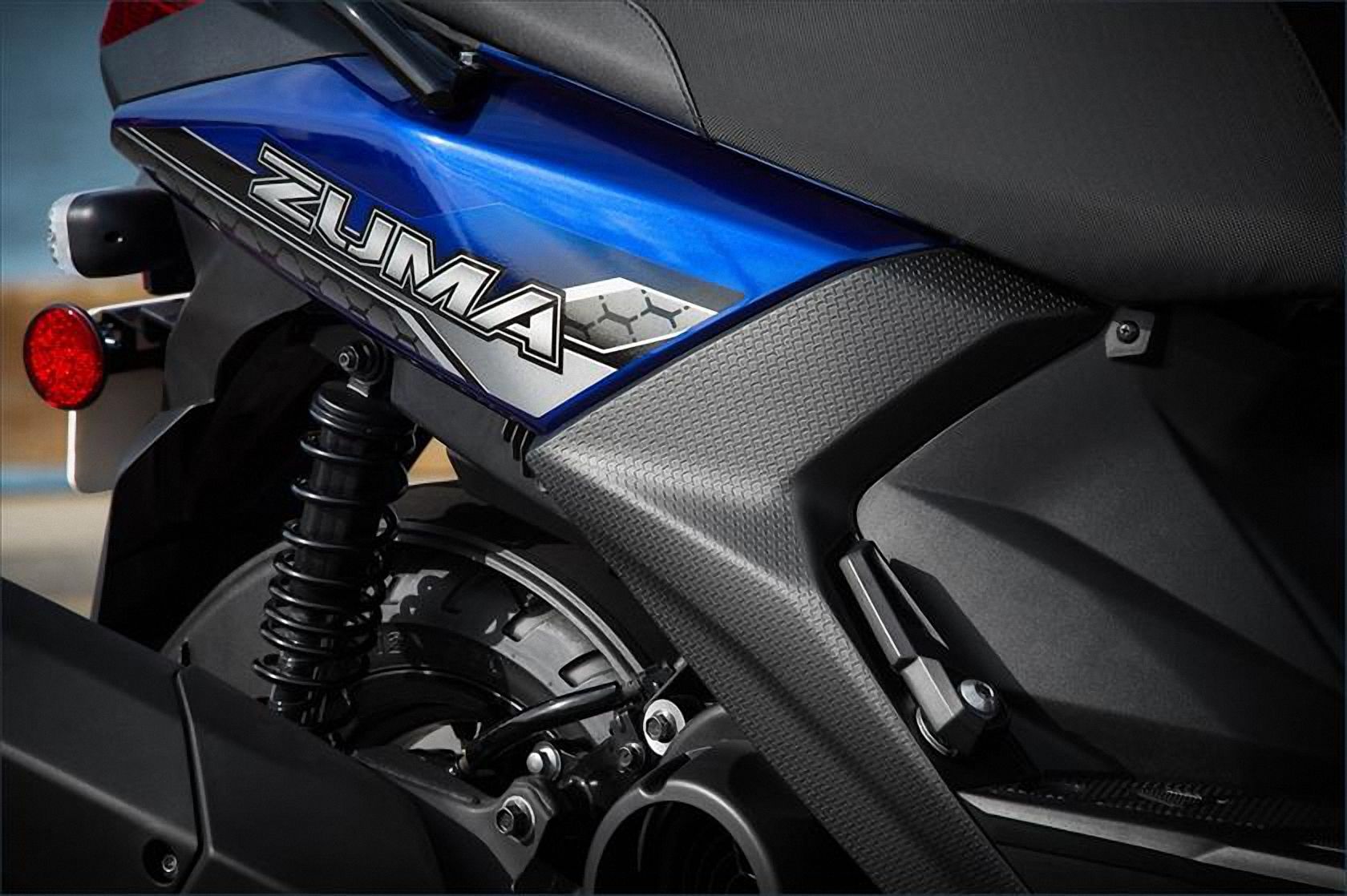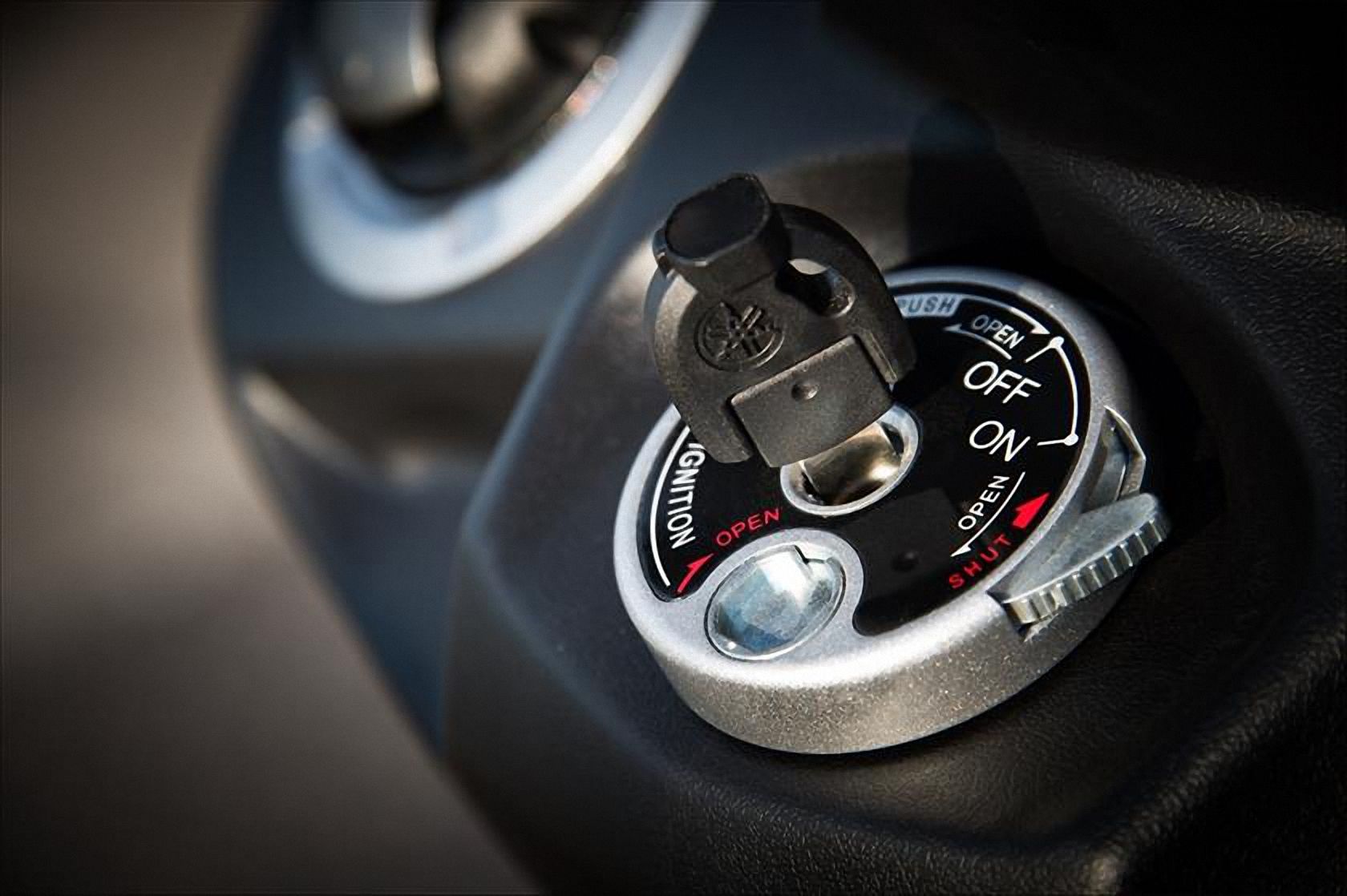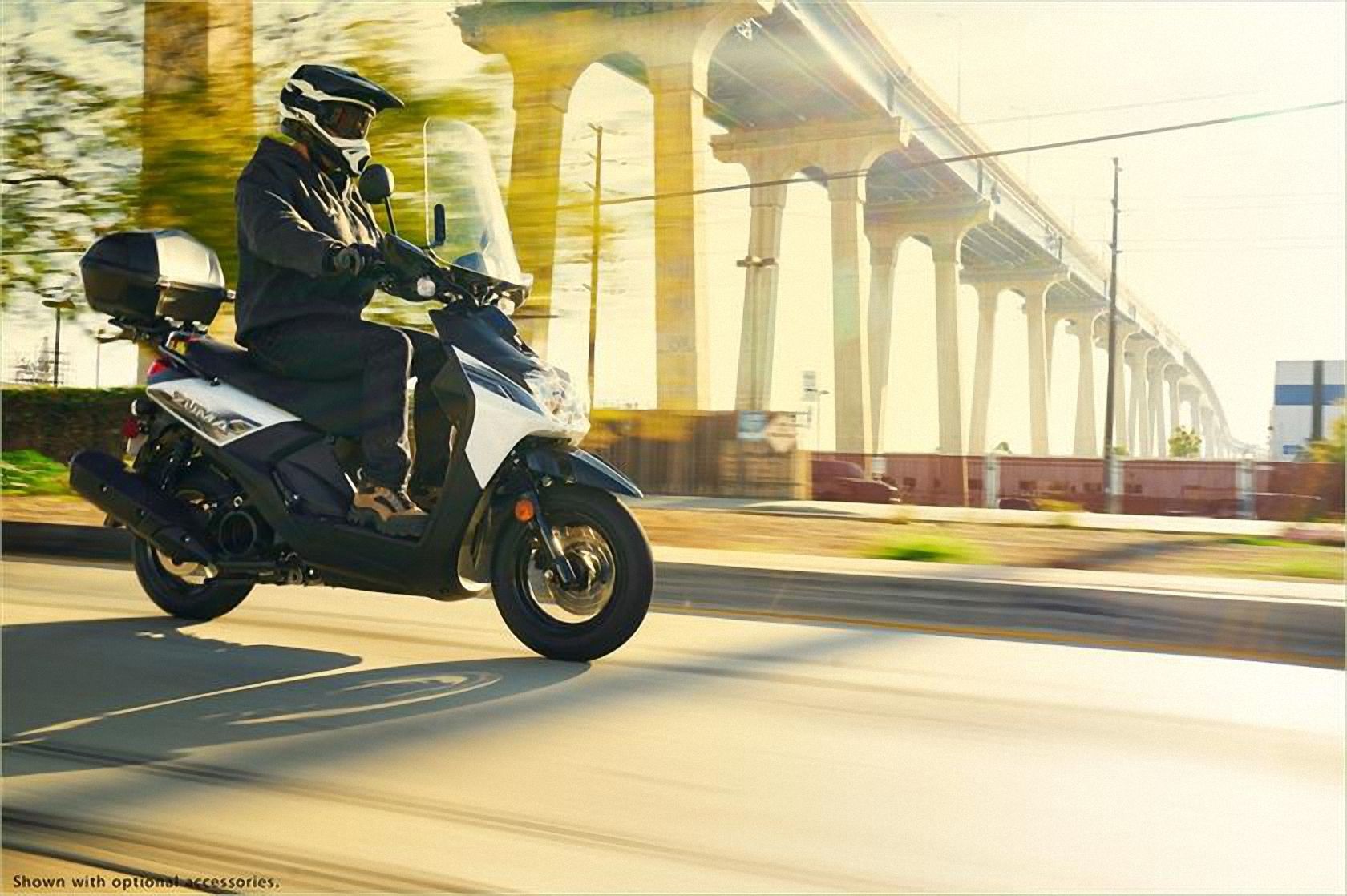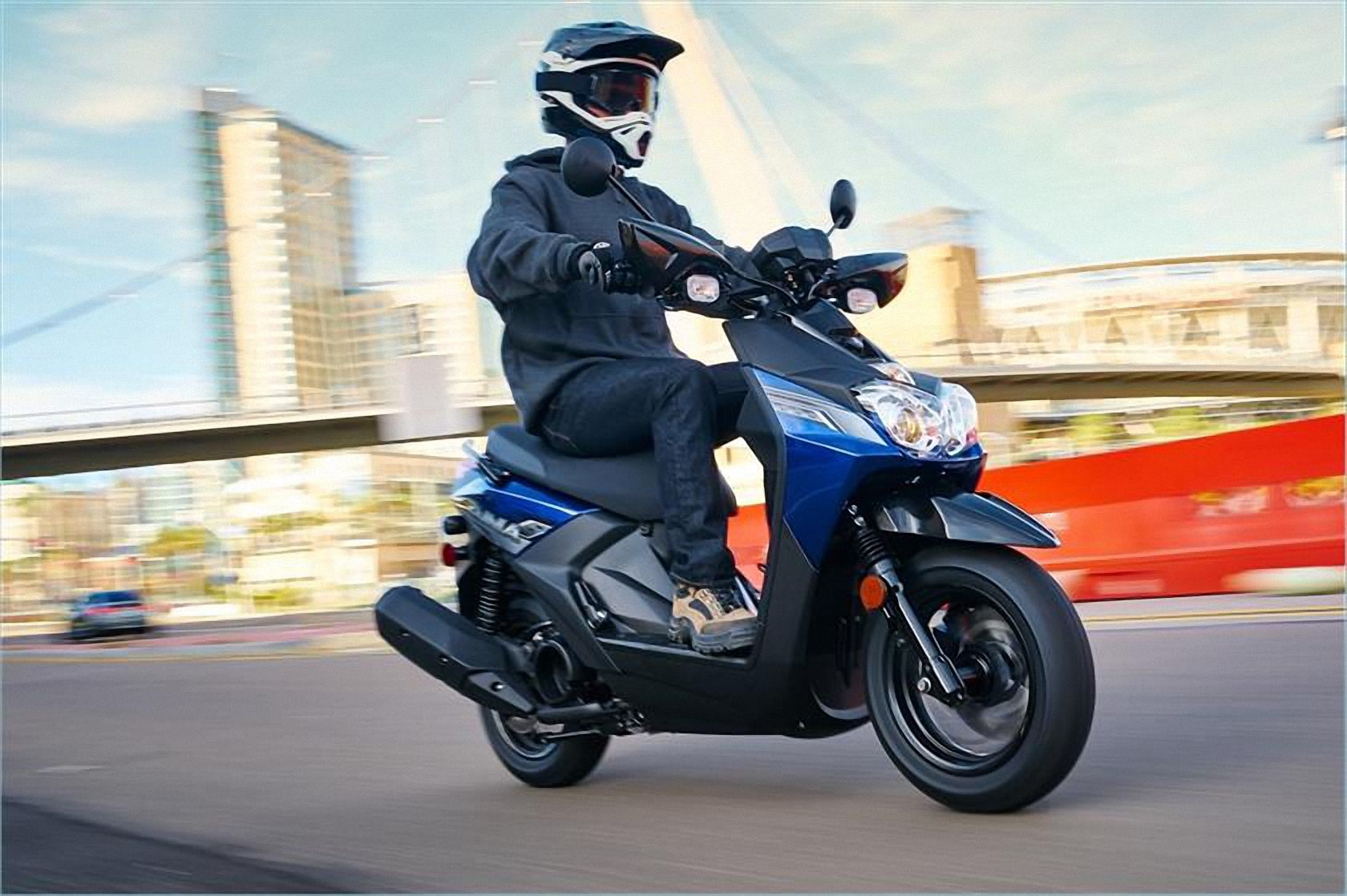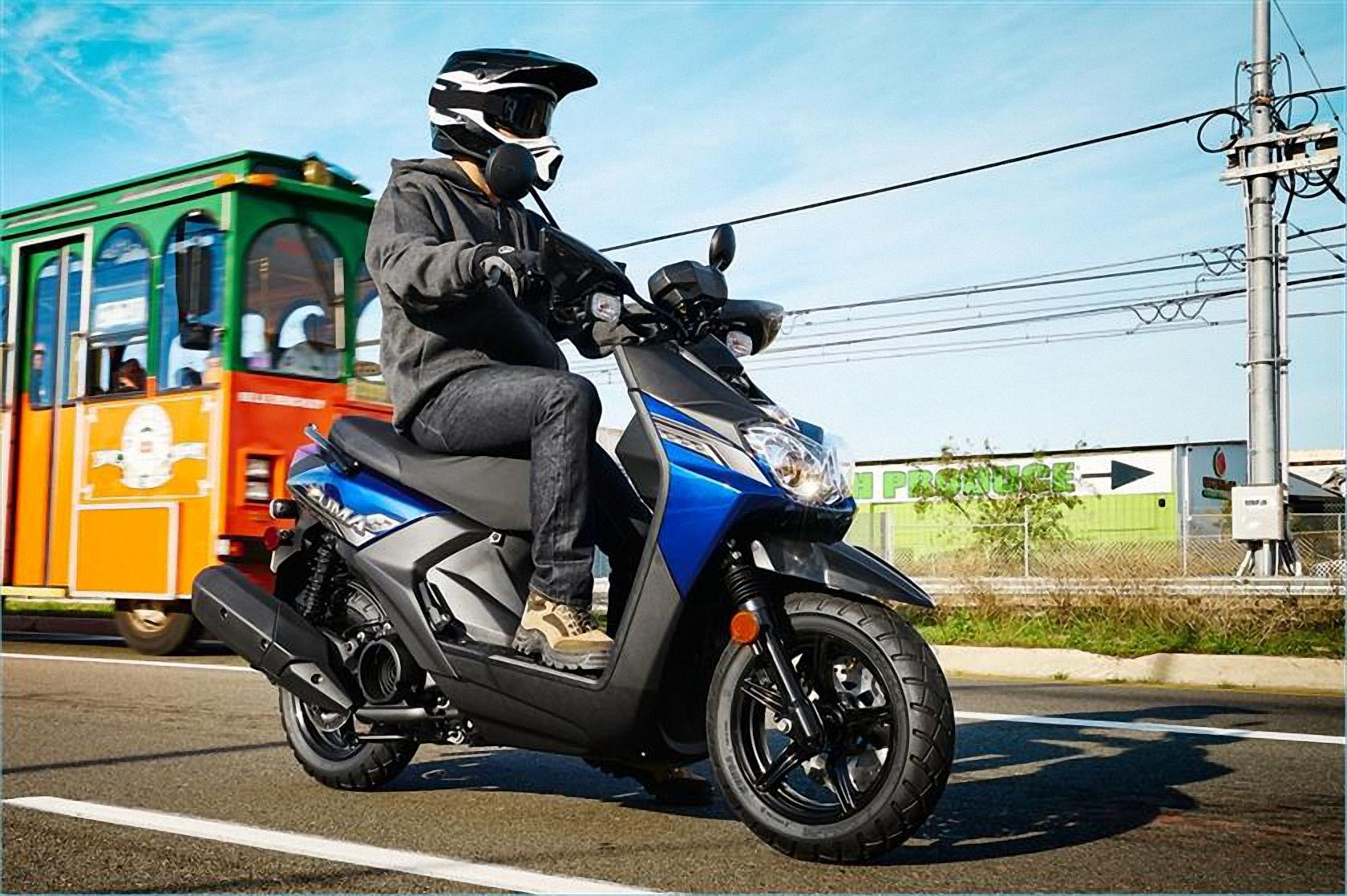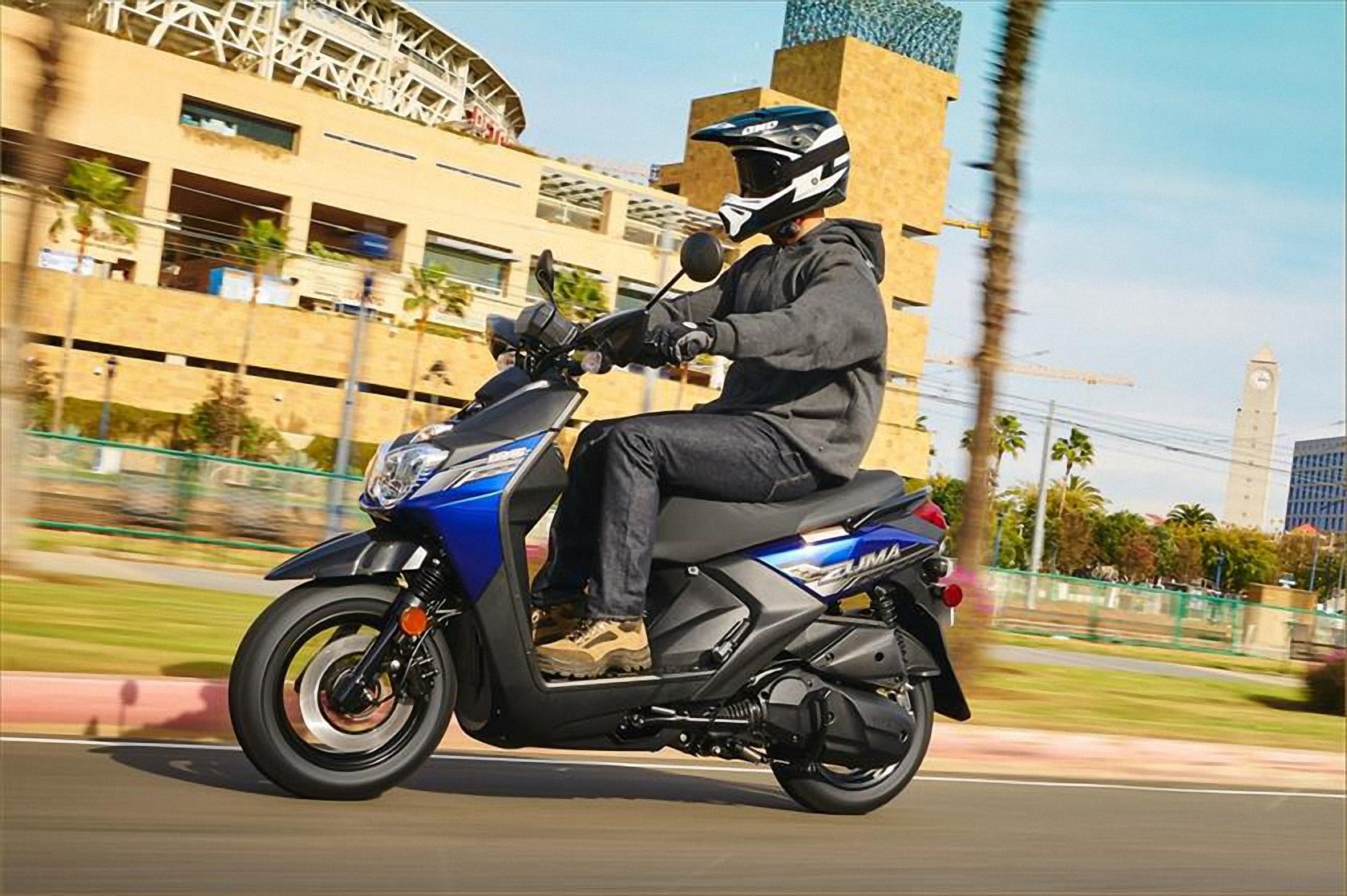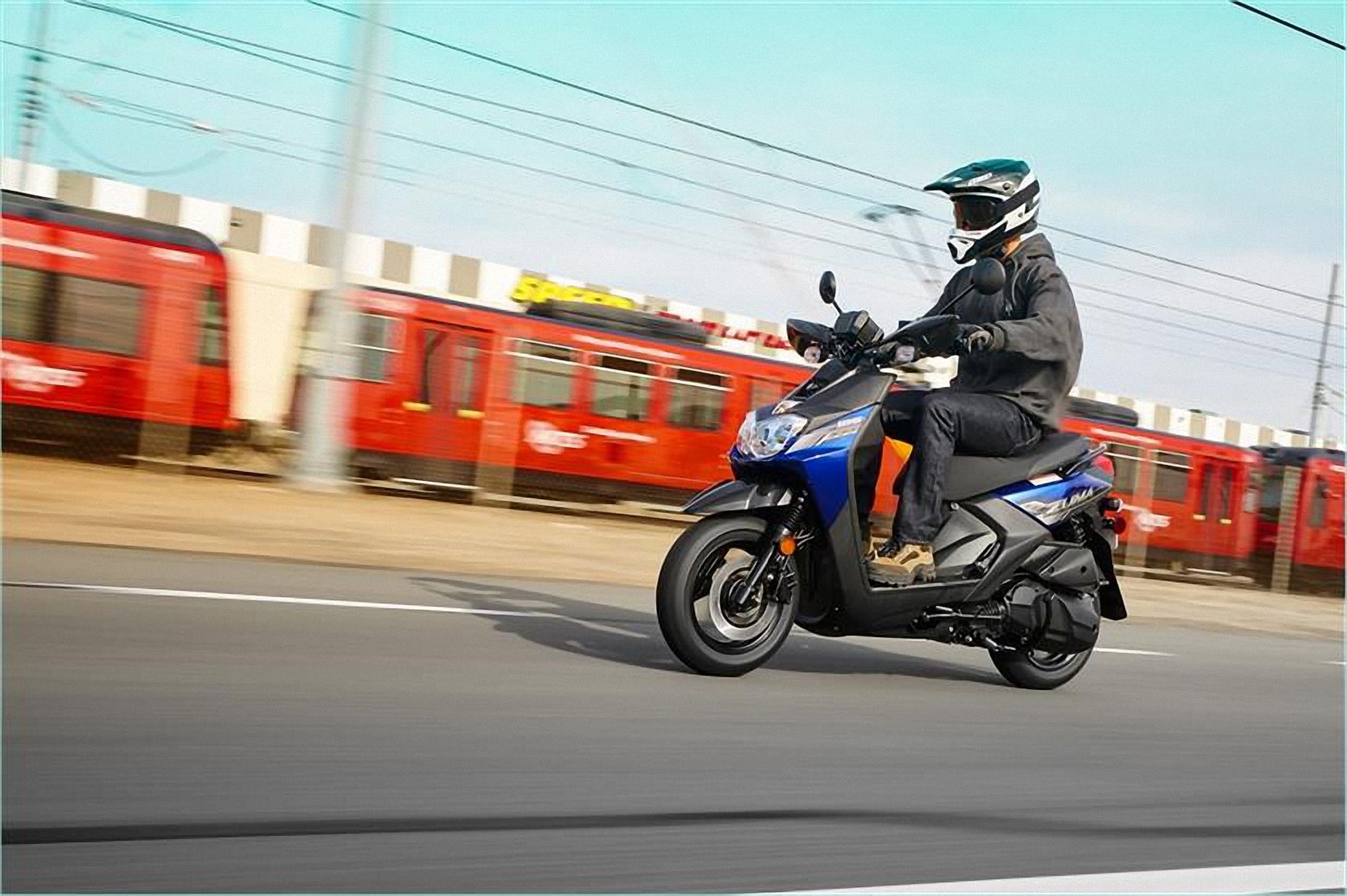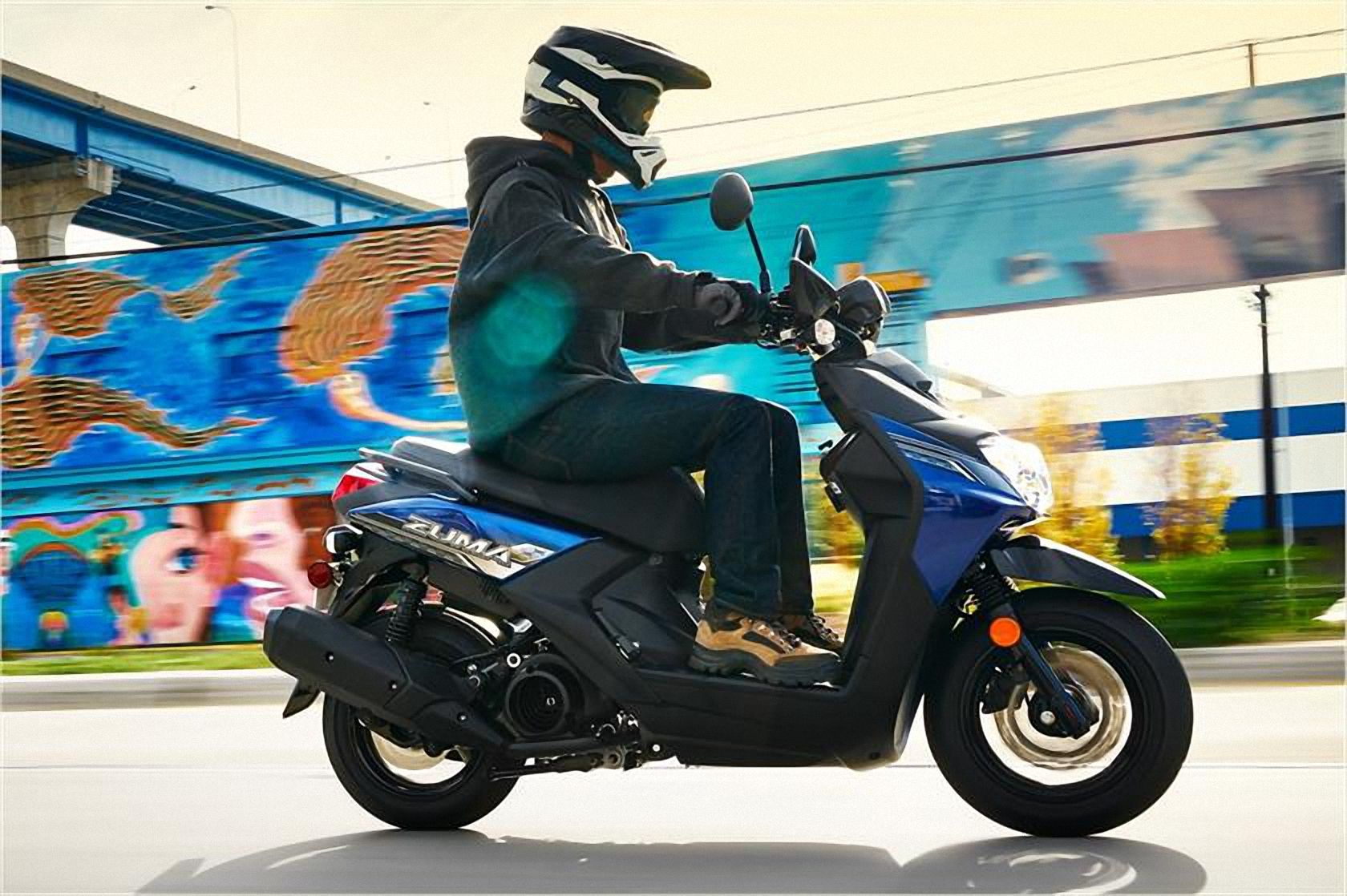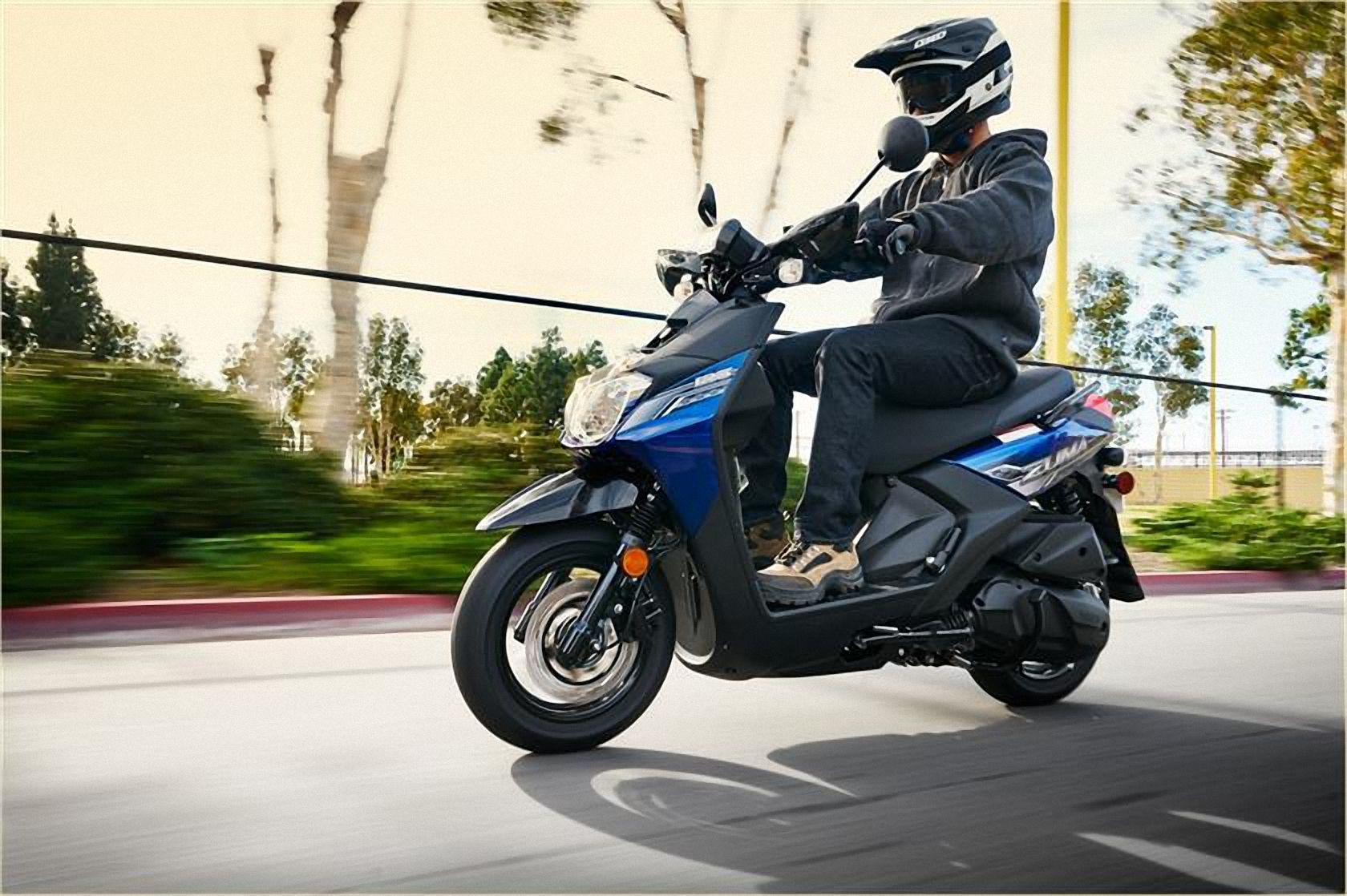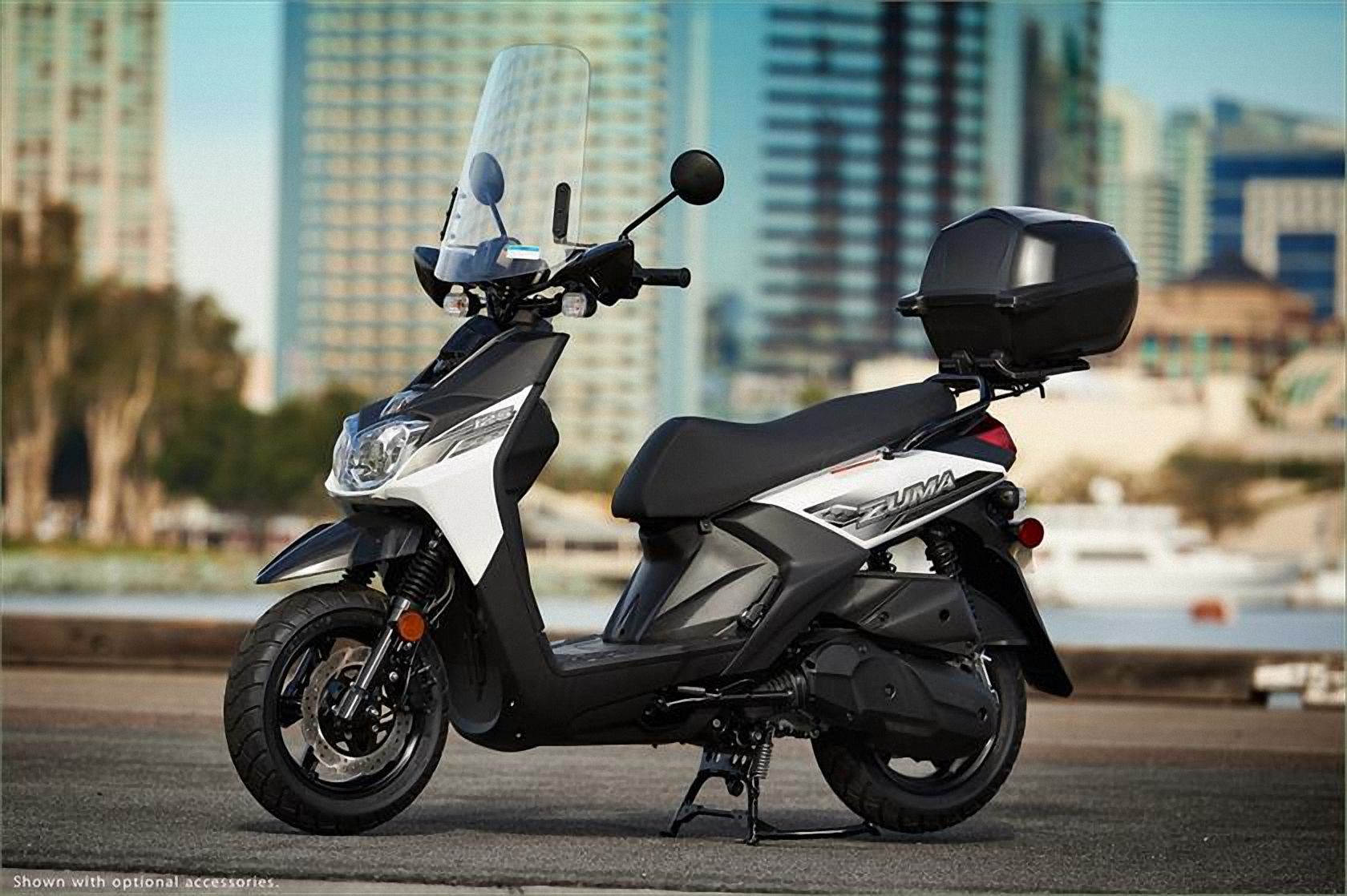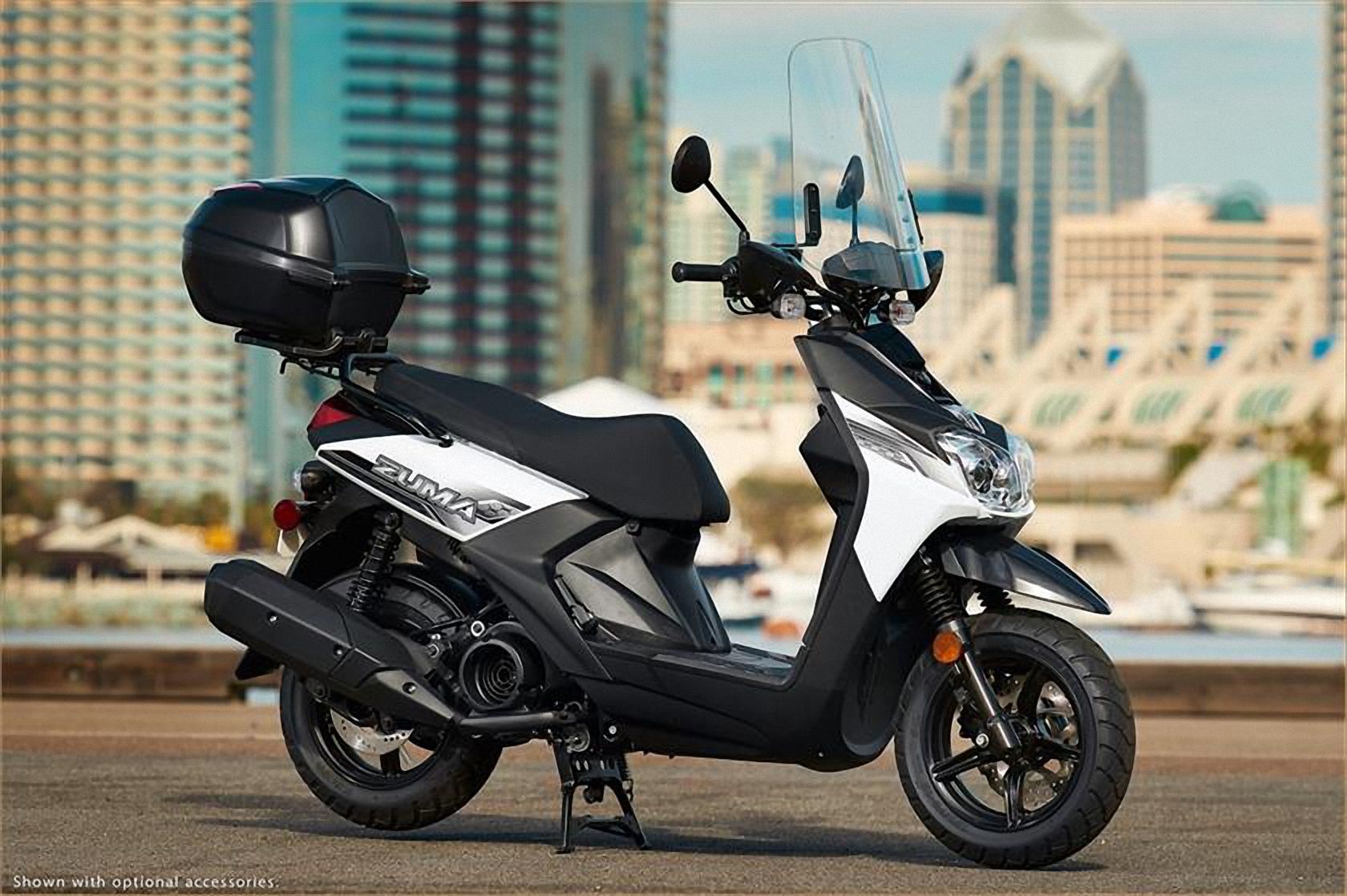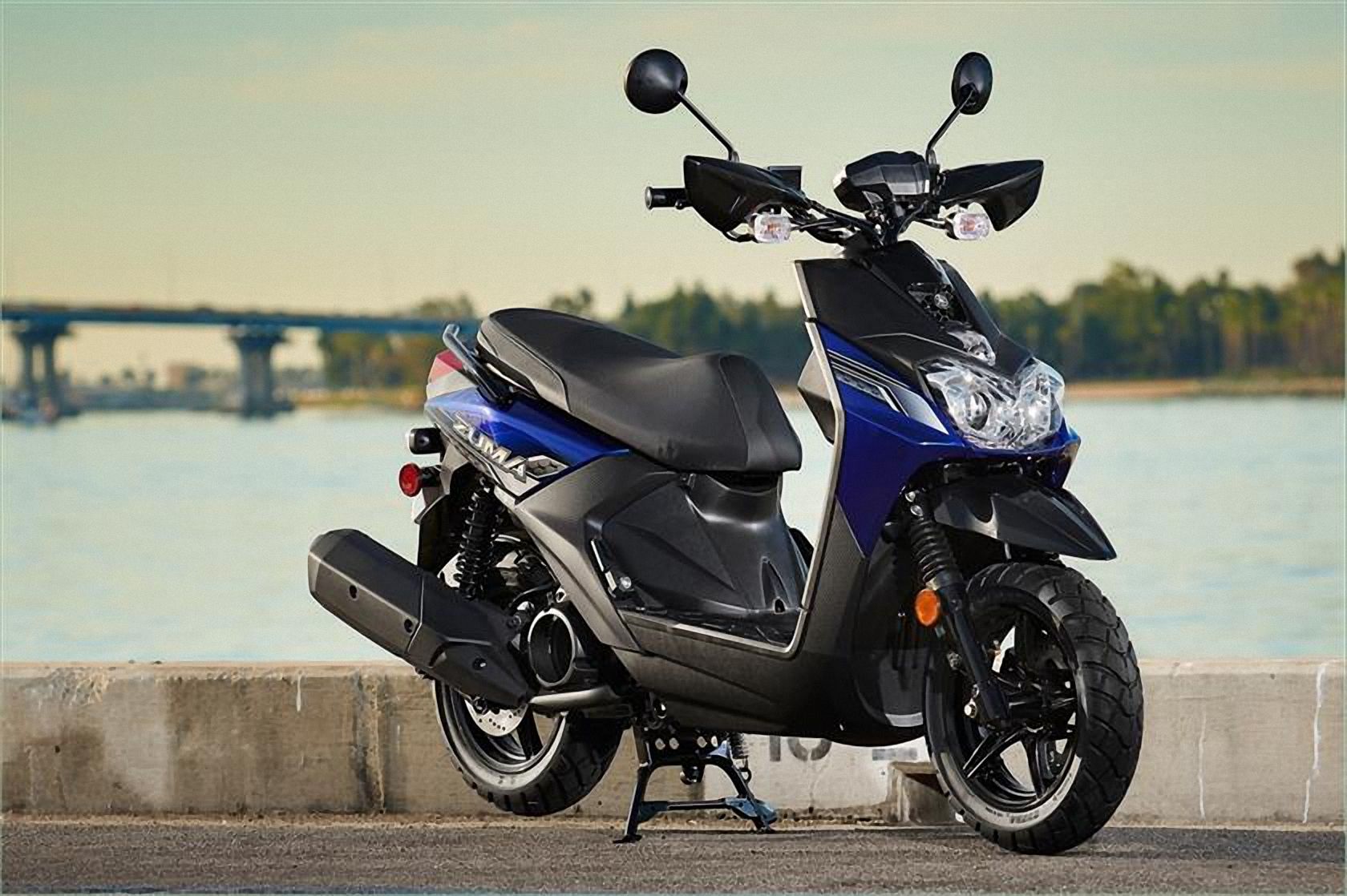Reintroduced in 2011, Yamaha's Zuma 125 provides a viable alternative to the old-fashioned, '60s-style scooter prevalent from the Italian manufacturers, and those who would try to garner a slice of that market. A modern shape and revised chassis carries the four-stroke fuel-injected engine in a spiffy little scooter that -- with upwards of 100+ mpg -- makes a capable commuter or errand-runner.
2016 - 2021 Yamaha Zuma 125
- Make: Array
- Model: 2016 - 2021 Yamaha Zuma 125
- Engine/Motor: single cylinder
- [do not use] Vehicle Model: Array
Yamaha Zuma 125 Design
Modern and minimal. That's the first thing that came to mind when I first beheld the Yamaha Zuma 125. There's absolutely nothing in the way of fat or fluff to be found here, just the bare essentials. A minimal front fairing houses side-by-side, high- and low-beam headlights atop a high-mount mudguard. The handlebar area is completely naked without even a flyscreen to protect the rider or the single-clock instrument cluster. This leaves your entire trunk exposed to the wind, but on the bright side at least your helmet vents will get the airflow they need to work properly.
Narrow at the entry, the skinniness continues into the legguard to form a minimal protective pocket for the lower extremities. A locking fuel door in the left side of the inner fairing provides convenient access for refueling, but something about the fuel tube and vent causes the system to burp small amounts of fuel during refueling operations. It's a minor complaint and one of the few you'll hear from owners.
A panel-over-pipe construction uses tubular steel members for strength, and allows for a full step-through with a side-to-side flat deck. Normally I'd tout the 'tween-feet storage, but the Zuma is so narrow, you aren't likely to carry very much down there. Storage for your helmet or cargo space for a grocery-getting mission is in the 7.7-gallon, underseat storage compartment. A flip-out hook and cup holder finishes out the storage options, unless you count the grab rails around the pillion seat that are handy spots to hang a bungee net and turn your p-pad into a casual luggage rack.
A molded-in taillight housing keeps the “subframe” area clean, and the rear turn signals come on short standoffs, just like the front. Overall, a rather sporty, if angular, little ride. I hesitate calling it unattractive, but it's more a rugged design and will appeal to folks looking for a less-than-cutesy-looking scooter.
Yamaha Zuma 125 Chassis
A tubular-steel underframe on the Zuma 125 stiffens the assembly and gives it a 27-degree steering head angle for 3.7 inches of trail and crisp handling in spite of its fat tires. Cast-aluminum rims run a 12-inch diameter with a 120/70 hoop up front and a 130/70 in the rear, and Yamaha picked tires specifically built for service on unimproved roads so you can at least tackle dirt roads, if not actual light terrain. The 2016 model year saw the front fork-tube diameter increased to 33 mm, up from 27 mm the year before, and the stems run with bellowed fork gaiters to protect the inner fork tube and fork seal. Plus, they look kinda cool and that never hurts.
A pair of coil-over shocks support the swing-mount drivetrain with 3.1 inches of travel on tap to absorbs life's little bumps. Like the suspension components, the brakes were updated in '16 as well. The factory bumped the front brake diameter up to 245 mm from 220 mm, and it dropped the rear drum brake altogether in favor of all-around hydraulic discs. That's a nice step up, but I leave it to the reader to decide whether the lack of ABS is a downside or not. I like the simplicity and honest feedback at the levers and am well accustomed to riding sans safety nets. safety nets.
Yamaha opted for a wave-cut front rotor that dissipates heat more efficiently than a plain round disc, and the shape provides a bit of a self-cleaning service for the front brake. Yamaha touts the Zuma as a sort-of “go anywhere” scooter, but in actuality, the 4.9-inch ground clearance and limited suspension travel sharply curtails the scope of the word “anywhere.”
|
Rake (Castor Angle): |
27.0° |
|
Trail: |
3.7 in |
|
Suspension / Front: |
Telescopic forks |
|
Suspension / Rear: |
Dual shocks |
|
Brakes / Front: |
Hydraulic disc, 245 mm |
|
Brakes / Rear: |
Hydraulic disc, 200 mm |
|
Tires / Front: |
120/70-12 |
|
Tires / Rear: |
130/70-12 |
Yamaha Zuma 125 Drivetrain
Yamaha powers the Zuma 125 with a 125 cc thumper that runs an undersquare layout with a 52.4 mm bore and 57.9 mm stroke. A ceramic-composite cylinder coating replaces the heavy and expensive sleeve. The factory has some experience with this technology, and claims it provides superior heat transfer and wear resistance.
Forced-air cooling removes waste heat. In my opinion, that's the best of both worlds. You get the simplicity of air-cooling with the greater, traffic-sitting capacity of a liquid-cooled mill. Honestly, though, if you're on one of these, what are you doing sitting in traffic anyway?
A SOHC times the four-valve head, and a 24 mm Mikuni throttle body manages the induction. Mileage with this plant falls out just over 100 mpg, but the spicy compression ratio will put you at the premium pump.
At 6,000 rpm, the mill cranks out 7 pound-feet of torque, power that gets the 262-pound wet weight moving quick, fast, and in a hurry. Electric start and a Continuously Variable Transmission rounds out the rider's convenience features for push-button-twist-and-go operation.
|
Engine Type: |
125cc forced air-cooled, 4-stroke SOHC single; 4 valves |
|
Bore x Stroke: |
52.4 mm x 57.9 mm |
|
Compression Ratio: |
10.0:1 |
|
Fuel Delivery: |
Fuel injection |
|
Ignition: |
Digital TCI: Transistor Controlled Ignition |
|
Transmission: |
V-Belt automatic |
Yamaha Zuma 125 Pricing
The MY2021 Zuma 125 is out and available for $3,599, just a skosh up from last year. Colorways carried over, though, with a choice between Matte Black or Ultramarine Blue.
|
Warranty: |
1 Year (Limited Factory Warranty) |
|
Colors: |
|
|
└ 2015: |
Stardust Silver, Competition Silver/Heat Red |
|
└ 2016: |
Ultramarine Blue, Radical White |
|
└ 2017, 2018: |
Heat Red, Liquid Silver |
|
└ 2019 - 2021: |
Matte Black, Ultramarine Blue |
|
Price: |
|
|
└ 2015, 2016: |
$3,390 |
|
└ 2017 - 2019: |
$3,399 |
|
└ 2020: |
$3,499 |
|
└ 2021: |
$3,599 |
Yamaha Zuma 125 Competitors
There are plenty of big-name scooter makers out there, but it's hard to beat Yamaha for name recognition. Instead of looking to the other powerhouses, I took a look at a big but little-known maker and found a match with the Lance PCH 125.
Lance PCH
The Lance has a less pronounced shape at the front fairing, and it carries the mudguard low as a slider-mount for less of the “bird's beak” effect. Up top, the PCH carries a small flyscreen that definitely protects the instrument cluster and probably little else. Both sport the full step-through with a flat deck, something I'm always glad to see.
Chassis builds are remarkably similar with telescopic forks and hydraulic brakes, but Lance runs the old-fashioned rear drum brake and it falls behind in disc diameter with only 190 mm up front against the 245 mm Yamaha disc. Twelve-inch, cast-aluminum rims are a constant across the board, as are the 120/70 front and 130/70 rear hoops.
One big advantage Lance brings to the table is a much greater ground clearance. At 8.1-inches high, the PCH has the frame-to-ground clearance to be more off-road-tastic than the Zuma would dare. I'm not saying the PCH is good for off-road work, merely saying that it might suck less at negotiating light terrain, at least.
The engines are likewise similar. One-lung thumpers rule the day with fancy cylinder coatings and air cooling all around. CVT gearboxes provide the effortless riding scooter riders are accustomed to, and the only difference I see between the two lies in the 6.14 pound-foot of torque from the PCH that falls a bit short of Yamaha's 7 pounds o' grunt, and a lower compression ratio of 9.6-to-1 that isn't lower enough to get you to a less expensive gas pump.
Naturally, Lance is able to let loose of the PCH 125 for a low $1,899 price, much lower than the $3,399 sticker on the Zuma. I know Yamaha's name-power counts for a lot, but does it count that much? You'll have to decide.
Read our full review of the Lance PCH125.
He Said
My husband and fellow motorcycle writer, TJ Hinton, says, “Argh! Another bloody, lower-midsize scooter that looks like a bajillion others just like it. Looking at the competitor I got the feeling that neither would be in service very long over here, where road speeds and the driving culture in general will force people to “outgrow” such a small ride rather quickly. I can see this as a much bigger seller in Asian markets, to be sure.”
She Said
"Having never lived in a densely populated urban area, my husband doesn't see the point. I do. Around campus, in the city where parking space is precious real estate, and just as an errand-go-getter, scooters are great and this 125 cc size is, in my opinion, a better option than a 50 cc for capabilities and safety."
Yamaha Zuma 125 Specifications
|
Engine & Drivetrain: |
|
|
Engine: |
Forced air-cooled, 4-stroke SOHC single; 4 valves |
|
Bore x Stroke: |
52.4 mm x 57.9 mm |
|
Displacement: |
125 cc |
|
Compression Ratio: |
10.0:1 |
|
Fuel Delivery: |
Fuel injection |
|
Ignition: |
Digital TCI: Transistor Controlled Ignition |
|
Transmission: |
V-Belt automatic |
|
Chassis: |
|
|
Suspension / Front: |
Telescopic forks |
|
Suspension / Rear: |
Dual shocks |
|
Rake (Castor Angle): |
27.0° |
|
Trail: |
3.7 in |
|
Brakes / Front: |
Hydraulic disc, 245 mm |
|
Brakes / Rear: |
Hydraulic disc, 200 mm |
|
Tires / Front: |
120/70-12 |
|
Tires / Rear: |
130/70-12 |
|
Dimensions & Capacities: |
|
|
L x W x H: |
75.2 in x 30.1 in x 44.3 in |
|
Seat Height: |
30.7 in |
|
Wheelbase: |
51.4 in |
|
Maximum Ground Clearance: |
4.9 in |
|
Fuel Capacity: |
1.7 gal |
|
Fuel Economy: |
103 mpg |
|
Curb Weight: |
262 lb |
|
Details: |
|
|
Warranty: |
1 Year (Limited Factory Warranty) |
|
Colors: |
|
|
└ 2015: |
Stardust Silver, Competition Silver/Heat Red |
|
└ 2016: |
Ultramarine Blue, Radical White |
|
└ 2017, 2018: |
Heat Red, Liquid Silver |
|
└ 2019 - 2021: |
Matte Black, Ultramarine Blue |
|
Price: |
|
|
└ 2015, 2016: |
$3,390 |
|
└ 2017 - 2019: |
$3,399 |
|
└ 2020: |
$3,499 |
|
└ 2021: |
$3,599 |
Further Reading
Yamaha
|
|
link=mot301> |
Read more Yamaha news.


